Matador Network's Blog, page 50
April 28, 2025
Houston’s Art Scene Is Wildly Underrated. Here’s Where to Play, Eat, and Stay to Check It Out.

I’d just stepped out of a glowing, dreamlike installation at Art Club in Houston — one of those immersive, blink-and-you’re-in-another-reality spaces — when a woman from the gallery stopped me with a smile and one perfect question: “Did you love it?”
I nodded, still a little dazed, and before I could say much more, she rattled off a half-dozen other places I had to see. Not just museums but artist-run spaces, warehouse galleries, a pop-up someone’s cousin was curating in a backyard that weekend. Her recommendations came fast and lovingly, like she was letting me in on a secret she couldn’t bear to keep to herself.
That kind of infectious enthusiasm became the through-line of my time in Houston. Over the next few days, I heard a similar refrain on sidewalks, restaurants, in line for coffee. I’d say, “This is one of the best meals I’ve ever had,” and the server would immediately say, “Oh, you’ve got to try the place down the street.” I’d compliment a gallery, and the artist would hand me a flyer for someone else’s show across town.
At first, I chalked it up to Southern hospitality. But then I realized: this isn’t just friendliness. It’s a kind of creative generosity that runs deep. Everyone was actively, enthusiastically rooting for someone else. The effect was disarming, magnetic, and wildly inspiring.
It was a far cry from my first trip to Houston — a long-ago, tequila-fueled weekend that involved a spontaneous nose piercing, buckets of queso, and a blurry late-night call to rapper Mike Jones (don’t ask). The city was fun, sure, but it didn’t leave a lasting impression beyond heat and highways.
So when I came back this time, my expectations weren’t high. A few good meals, maybe a couple decent museums. Instead, Houston completely and gloriously proved me wrong.
What I found on this trip is that nothing is siloed. The food is part of the art scene. The music lives in the galleries. A performance artist might hand you their DJ schedule; a chef might send you to their favorite immersive installation. The whole city feels like a collective creation in progress, and everyone’s part of it. It’s one of the most creatively alive places I’ve ever visited — not in a manufactured way but in a deeply lived, organic, unpretentious way.
Houston doesn’t announce itself with the swagger of New York or the boho buzz of Austin, but that’s exactly what makes it feel so electric. This is a city where creativity doesn’t come from the top down; it bubbles up from backyards, brunch tables, and repurposed warehouses, carried forward by a community that genuinely wants you to be part of it. You’ll come for the art, the food, and the surprise of it all, but it’s the people, constantly hyping each other, lifting each other up, and passing you the next must-see spot like a handwritten note, who will stay with you.
That’s why Houston isn’t just a destination. It’s an invitation.
An unforgettable introduction to Houston’s art sceneMeow Wolf Radio Tave
Photo: Arturo Olmos
If Houston had a wormhole to another world, it would be Meow Wolf’s Radio Tave. Housed in a transformed sheet metal factory in the Fifth Ward — one of Houston’s oldest neighborhoods — this immersive, choose-your-own-adventure art experience begins inside what appears to be a community radio station, then explodes into an intergalactic fever dream. Doors lead to wormholes, vending machines hide secret passages, and each twist reveals something more surreal than the last. Designed by more than 100 artists (more than half of them local), the space pulses with light, sound, color, and storytelling, inviting you to wander, climb, crawl, and connect the narrative dots (or not). Like its sister locations in Santa Fe (The House of Eternal Return) and Las Vegas (Omega Mart), Radio Tave plays with perception and possibility. But here it’s with a decidedly Houston twist.
Meow Wolf: 2103 Lyons Ave Building 2, Houston, TX 77020
Menil Collection
Photo: Maggie Downs
Step into the Menil Collection and you step into another tempo entirely — one where time slows, light softens, and art breathes. This gem in the arty Montrose neighborhood doesn’t shout for your attention; it gently holds it, offering airy, sun-dappled galleries where ancient sculptures share space with 20th-century icons like Magritte, Ernst, and Rauschenberg. The curation feels intuitive, almost poetic — works placed not for spectacle but for conversation. The best part? It’s always free. Which means you can swing by, get your fill of inspiration, and head back out into Houston with your creative cup overflowing.
Menil Collection: 1533 Sul Ross St, Houston, TX 77006
Rothko Chapel
Photo: Houston First Corporation
More than just a place of art, the Rothko Chapel is a spiritual pause button in the middle of Montrose, a contemplative space where light, shadow, and silence take center stage. Designed in collaboration with the famous Abstract Expressionist painter Mark Rothko himself, the octagonal sanctuary houses 14 of his moodiest, most meditative works, which feel less like paintings and more like portals to another world. More than a museum, this space is also a long-standing hub for social justice, human rights, and interfaith dialogue. Whether you’re perched on a meditation cushion or simply soaking in the sacred hush, Rothko Chapel invites you to stop scrolling, look inward, and remember that introspection, too, can be a radical act.
Rothko Chapel: 3900 Yupon St, Houston, TX 77006
National Museum of Funeral History
Photo: Maggie Downs
Stay with me here. I’d argue that honoring the dead is an art, and in true Houston fashion, there’s an entire museum devoted to it. The National Museum of Funeral History might sound like a punchline, but step inside, and it’s anything but. The exhibits range from the elaborate pageantry of presidential funerals to the exuberant artistry of Ghanaian fantasy coffins, hand-carved in the shape of fish, animals, and even an airplane. There’s Victorian hair jewelry (yes, made from actual locks of the deceased), Day of the Dead altars, and dazzling examples of how different cultures use creativity to grieve, celebrate, and remember. It’s moving, eccentric, and exactly the kind of unexpected wonder that Houston does best.
National Museum of Funeral History: 415 Barren Springs Dr, Houston, TX 77090
Art Club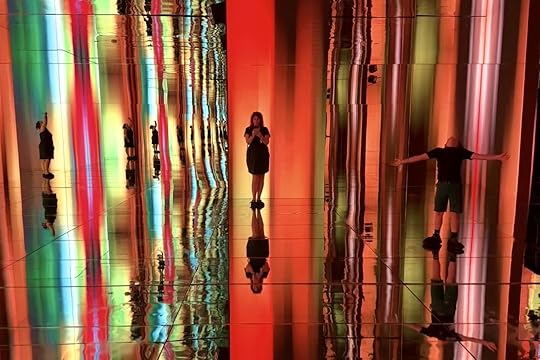
Photo: Maggie Downs
Tucked inside the X Atrium venue at POST Houston — an entertainment hub housed in a former post office downtown — Art Club is where digital art and nightlife collide in a kaleidoscopic sensory playground. By day, it’s a black-box museum featuring about a dozen immersive installations from global new media artists — think AI-animated murals, laser-sculpted light fields, and a mind-bending Infinity Room that feels like stepping into a lucid dream. By night, the space flips into Club Mode, where DJs and VJs transform the exhibits into a living, breathing, audio-visual experience. It’s part gallery, part rave, and all Houston — bold, experimental, and unapologetically cool. Whether you’re chasing the next-level selfie or vibing to underground beats beneath a canopy of projected light, Art Club is the city’s most electrifying cultural crossover.
Art Club: 401 Franklin St Suite 1050, Houston, TX 77201
Art Car Parade
Photo: Charlie Ewing
Imagine if Burning Man collided with a Fourth of July parade and landed smack in the heart of Houston. That’s the Art Car Parade. Every April, more than 250 decked-out rides (think glitter-drenched lowriders, dragon-shaped school buses, and kinetic sculptures on wheels) cruise down Allen Parkway in a technicolor procession that feels like a rolling block party. It’s DIY culture meets high-octane creativity, where artists, eccentrics, and visionaries roll up to show out. Bring your camera, bring your own brand of weirdness, and don’t be surprised if you leave inspired to paint your own car neon pink.
Art Car Parade: Allen Parkway between Taft and Bagby Streets
Houston eateries so cool they could be galleriesCowboix Hevvven
Photo: Maggie Downs
Nestled inside Meow Wolf Houston, this art bar is a visual fever dream of cowboy angels, glittering jukeboxes, and mournful creatures — all while slinging rodeo-inspired bites and drinks that turn the whole experience into a multi-sensory feast. Think Frito pie with a twist, jalapeno poppers with interdimensional swagger, and cocktails that hit like a honky-tonk hallucination. Designed by artist Cole Bee Wilson, the space reimagines the Western mythos through a joyfully weird lens, and the food keeps the fantasy grounded in Texas flavor. Come for the art, stay for the snacks, leave wondering what the hell just happened.
Cowboix Hevvven: 2103 Lyons Ave Building 2, Houston, TX 77020
POST Houston
Photo: Maggie Downs
At POST Houston, food becomes part of the canvas. This sprawling culture hub in a converted post office is home to one of the city’s most eclectic food halls, where pop-ups and permanent vendors alike dish out global flavors under the same roof as Art Club and rooftop gardens. One minute you’re devouring Lao sausage and chili crisp noodles, the next you’re stumbling into a full-scale new media exhibit or live music set. POST isn’t just where you eat between art stops. It is the art stop.
POST Houston: 401 Franklin St, Houston, TX 77201
Late August
Photo: Rebekah Flores
Late August serves a whole vibe rooted in art, ancestry, and creativity. Housed in a former Sears building, the restaurant leans hard into its Afro-Mexican identity, and that ethos pulses through both the plates and the walls. A standout installation by Houston artist Robert Hodge commands the dining room, reimagining a vintage Sears catalog with layered imagery that connects African and Mexican heritage — Aztec patterns, a jaguar and elephant, all in vibrant dialogue. Chef Chris Williams brings the soul of Oaxaca into the space, too, including a piece he picked up while exploring the region’s art and culinary scenes. Photography by Coby Deal and works by Erika Alonso round out a collection that transforms the restaurant into an exciting gallery.
Late August: 4201 Main St Suite 120, Houston, TX 77002
Where to stay on a Houston arts tripHotel Saint Augustine
Photo: Julie Soefer
In a city bursting with bold visuals and immersive art, Hotel Saint Augustine offers something unexpected — restraint. Just steps from the Menil Collection, the Montrose hideaway from Bunkhouse keeps its interiors refreshingly minimal, trading gallery walls for sunlit serenity and thoughtful design. This is deliberate. After a day wandering the Menil’s world-class collections, the hotel designers figured guests would crave a place to let the sights marinate. It’s an elegant pause between all the visual noise and without losing an ounce of soul.
Hotel Saint Augustine: 4110 Loretto Dr, Houston, TX 77006
How to get around Houston
Photo: Nate Hovee/Shutterstock
Getting around Houston takes a little strategy and a little flexibility. The city is sprawling (it has three separate skylines!), so while rideshares are plentiful and reliable, renting a car will give you more freedom to bounce between neighborhoods. If renting a car isn’t in your budget, the METRO connects key hubs like the Museum District, Downtown, and Midtown. Bike and scooter rentals are also available. 
11 Bigfoot Campgrounds: Where to Pitch Your Tent for a Sasquatch Sighting
 The 11 Best Campgrounds in North America for Spotting Sasquatch
The 11 Best Campgrounds in North America for Spotting SasquatchTThe United States is home to some of the most diverse landscapes in the world, and with that comes a diverse range of wildlife. Depending on your source, North America is home to about 450 mammal species found in the wild. But if you ask certain travelers, that number should actually be 451 — because according to some believers, Sasquatch is very, very real.
The name “Sasquatch” comes from the Salish word “Sasq’ets,” meaning “hairy man” or “wild man.” The cryptid is usually describes as ape-like, covered in dark fur or hair, and taller than a man — often around seven or eight feet tall. It’s usually bipedal (walking on two legs) and goes by other names, including Bigfoot. If you’re in the south, it may be called a skunk ape, while snow-covered and arctic areas usually call it a yeti. There are regional variations, too. They sometimes go by “Momo” in Missouri, or the “Old Men of the Mountain” in West Virginia.

Photo: Kay Olivier/Shutterstock
Bigfoot is most often associated with the dense forests and rugged terrain of North America, particularly in the Pacific Northwest around northern California, Oregon, Washington, and British Columbia. Of those, Washington has the most sightings, according to the fairly comprehensive database from the Bigfoot Research Organization, or BFRO. However, sightings stretch across the US, from Florida to Alaska. While the locations are varied, there are a few similarities many reports have in common of areas that would be ideal for a large, elusive mammal.
Dense forests and mountainous regions are the most common settings for Bigfoot encounters. These areas would provide a mammal with ample cover and concealment, and have many areas that would be hard for humans to access on foot, like ravines, caves, and rocky ridgelines. Sightings also tend to occur in regions without much human presence, but with plenty of food sources, such as fruits, nuts, leaves, and potential prey animals. Bigfoot is rarely seen in farmland or prairies, and reports that mention its large size and heavy fur coat suggest that it could be well-suited to areas with mild summers and cold winters.
Fortunately, that kind of environment is also where you’ll find some of the best campgrounds in North America, and many of the most notable Bigfoot encounters in the last few years have taken place in or near campgrounds.
To find the best campgrounds for Sasquatch sightings, Matador Network worked with our friends at The Dyrt to analyze campground reviews across the Dyrt’s extensive network for mentions of Bigfoot action. We also scoured databases like those from the BFRO and other Canada- and US-based crypitd groups to find campgrounds near reported sightings and famous Bigfoot encounters (like the famous Patterson/Gimlin footage from Bluff Creek, California). The campgrounds below are mostly remote, in areas with such little human development that you may be the only human there. Human.
Where to find campgrounds for Sasquatch sightingsIf you’re hoping for a ‘squatch sighting of your own, here are 11 campgrounds where you’ll have the best chance of a Bigfoot encounter, or at least may hear some mysterious howling in the distance.Mohican State Park, Ohio

Mohican Covered Bridge was the side of a Bigfoot encounter. Photo: Ralf Broskvar/Shutterstock
Type of encounter: Partial sightingDate: June 18, 2021Closest campground: Mohican State Park CampgroundIn June 2021, a woman and her friend were parking in Mohigan State Park’s campground and decided to jokingly try making “Bigfoot calls.” The woman reported that not long after, she heard distinct knocks on a tree from the woods, well above the height of a human. They then drove to a campground area, where the woman saw a furry leg and foot of animal. “It looked like it was slipping on the leaves and was trying to gain traction,” she wrote, “and its leg went straight up and behind a tree.” She also noted that it was cold and rainy that day, and that she noticed all the birds in the area stopped chirping a few minutes before the sighting occurred. The BRFO considers this a class B sighting, meaning it was a visual sighting, but in poor conditions that resulted in an obstructed view.
If you’re keen to investigate, you’ll want to pitch your tent at Mohigan State Park. Bigfoot or not, the campground has more than 40 five-star reviews on The Dyrt. Reservations are available online, and the park has an outdoor pool, a camp store, and even “gem mining” for kids.
St. Vrain State Park, Colorado
Photo: The Dyrt Camper Kellen T.
Type of encounter: SightingDate: March 12, 2025Closest campground: St. Vrain State ParkIn March 2025, a longtime resident of the Rocky Mountain foothills near Boulder reported a mysterious encounter. Around 10 PM, the woman said she saw an eight-foot-tall, ape-like figure walking near St. Vrain Road in front of her property. She said the creature was illuminated by moonlight and easy to see, saying it was hunched forward with bulky arms and legs. She reported that while elk and bears are common in the area, she’d not seen anything like that in her five decades of living there.
The case was investigated by the BFRO, whose researcher found her report highly credible, and noted that the area is a popular spring wildlife migration corridor, used by animals when the snow is too heavy for travel at higher elevations. While the sighting was on private property, it was very, very close to St. Vrain State Park, which has 87 campsites spread out between wooded areas and lakes. Reservations are available online, and the campground is open year-round. Day-of and walk-up reservations are available if the site isn’t fully booked.
Six Rivers National Forest, California
Photo: Zack Frank
Type of encounter: Sighting, footprints, vocalizationsDate: August 27, 1958Closest campground: Boise Creek CampgroundPitch your tent anywhere you’d like in Six Rivers National Forest, which is open to dispersed camping. But if you’re hoping for a Bigfoot encounter, you may want to camp near Bluff Creek. It’s the site of the famous 1958 footprint discovery that created the name “Bigfoot” and sparked much of the modern legend. But in 2022, a logger on his deathbed admitted he’d made the prints and kept the secret for his entire life. However, the area remains a magnet for Sasquatch enthusiasts — and camping enthusiasts, with beautiful, remote sites scattered under giant trees and along babbling brooks.
In the national forest, there are two options: established campsites, or dispersed camping. Dispersed camping is generally allowed away from official campsites; you can find more details here. Louse Camp is a pilgrimage site for Bigfoot enthusiasts and close to Willow Creek, where the Patterson/Gimlin video was filmed. It’s unmaintained and basically everyone who goes there is looking for Bigfoot. But if you want perks like a picnic table and tent site, you could held to Boise Creek Campground or the East Fork Campground (but check to make sure it’s open following Winter 2024/25 storm damage).
If you choose the Boise Creek campground, note that it’s a popular location for attempted Sasquatch sightings, with several reviews on The Dyrt mentioning keeping an eye out for Bigfoot herself.
Mark Twain National Forest, Missouri
Photo: The Dyrt Camper Sean A.
Type of encounter: SightingDate: April 1, 2016 (most recent) Closest campground: Berryman Trail & CampgroundsBerryman Trail & Campgrounds in Mark Twain National Forest has great reviews on The Dyrt, with a 4.5-star rating. Comments are high, too, with one reviewer noting “Came here to experience the Ozarks. We were not disappointed.” And if you’re trying to have a Sasquatch sighting, you may also leave on a happy note, since it’s an area loaded with Sasquatch reports. In fact, the same reviewer said they were warned by other campers of Bigfoots in the area.
One of the most notable sightings was in 2016, when a woman said she saw a large creature running on all fours on the edge of Mark Twain National Forest. She also noted that it was unlike any other animal she’d seen running, effectively ruling out the thought that it could be a bear or coyote. An investigator from the BFRO didn’t note whether he thought the report was valid, but did comment that the woman who reported the sighting was very adamant in what she experienced.
If you’re keen to have a similar experience, book a campsite at the small and remote Berryman Campground, with just eight sites about 90 minutes by car from St. Louis.
Cowlitz County, Washington
Merrill Lake Campground. Photo: The Dyrt Camper Cathy B
Type of encounter: Vocalizations and soundsDate: May 14, 2023 (most recent) Closest campground: Merrill Lake CampgroundCowlitz County, Washington, is home to Mount St. Helens. Washington leads the nation in Bigfoot sightings, and the forests around Mt. St. Helens are especially rife with in reports and folklore, including native legends of ape-like creatures living on the mountain. In 2023, there were reports of wood knocks (a known Bigfoot communication technique) at Merrill Lake Campground, and in 2020, Bigfoot vocalizations were heard near Spencer Butte — but sightings in the region go back as early as the 1950s.
Three of the most notable recent encounters, all full sightings, happened around Toutle River. Fortunately, you have options for where to stay. Tent campers will find available sights at Harry Gardner Park, near the South Toutle River, while RV campers can book a site at the Toutle River RV Resort. Merrill Lake Campground only has six reviews on the Dyrt, though they’re all five stars. So if you want to increase your chances of a Sasquatch sighting by picking a great campground where not many people go, it could be an excellent choice.
Clayoquot Sound, British Columbia
Photo: Roxana Gonzalez/Shutterstock
Type of encounter: Sounds and vocalizationsDate: Summer 2014Closest campground: Lone Cone CampgroundIn summer of 2014, an experienced paddler and photojournalist had one of the most threatening encounters with a Bigfoot to date. The journalist was staying alone in a remote cabin in Clayoquot Sound and left after five days, though he planned to stay for a month. On his fifth night, he heard boulders being flipped and thrown and rolled toward his cabin, and “bipedal” stomping outside the door that caused his cabin to rattle. It was accompanied, he said, by “horrifying vocalizations, disturbingly erratic and deliberate at once, tribal, not quite like human speech but similar enough to recognize certain elements.” In an article for Paddling Magazine, he recounted the experience, noting that he called for immediate pickup the next day.
The journalist’s account lines up with stories from the First Nations Nuu-chah-nulth people of Vancouver Island, who have stories about a forest-dweller called Buc Miis (pronounced “book-mees”). It’s more of a spiritual guardian than something to be scared of, but it’s often compared to creatures like Sasquatch.
The journalist didn’t say exactly where on Clayoquot Sound he was camping, but Meares Island is in an area rife with legends and sightings of a creature in the forest. You can camp at Lone Cone Campground, complete with a Sasquatch in its logo, or opt for something even further removed from civilization by backcountry/wilderness camping in places like Dawley Passage Park or Clayoquot Arm Park.
Yellowstone National Park, Wyoming
Photo: Yellowstone National Park/Public Domain
Type of encounter: Sightings and vocalizationsDate: 1970s and ’80s Closest campground: Backcountry sites near Fan CreekThe reports of Bigfoot encounters from Bob Jackson are notable for two reasons: he’s the first national park ranger to go on the record about Sasquatch sightings, and they happened within Yellowstone National Park. He reported several encounters during his 30-year career, starting with one in the late 1970s while patrolling the remote Fan Creek area, in the park’s northwestern corner.
Jackson said he heard a “prolonged, haunting sound” similar to a distress call of an elk, but on a much greater scale. He said it was “like a thousand elk going to their death.” A few weeks later, he saw a deer running through a meadow nearby, pursued by a large black figure on two legs. He said he thought it was a bear at first, but then he watched it using trees and growth for cover during the pursuit — something too advanced for a bear. He started asking around to other rangers, and said other people had also seen large footprints and heard strange sounds — though he was the only ranger to report it.
If you want to follow up on Jackson’s experiences, you’ll need to snag a backcountry camping permit and reserve one of the sites in the park’s northwestern corner. The campgrounds around Fan Creek are where Jackson says the encounters took place. If you’d prefer a frontcountry site, your two closest options are Madison Campground to the south, or the closer Indian Creek Campground, though the latter is closed in 2025. Camping reservations at Yellowstone go quick, so make your reservations in advance online as soon as possible.
Peak, South Carolina
Photo: The Dyrt/The Dyrt Camper Rachael S.
Type of encounter: SightingDate: November 2024Closest campground: Alston TrailheadThe town of Peak has only 60-something people, which may explain why it’s been easy for Bigfoots in the area to go unnoticed. But in early 2024, that changed, when a police office in Peak reported an early morning sighting. He was sitting in hunting blind when he heard grunts, and moments later, saw a shape about 7.5 feet tall. The officer reported that he and the creature both looked at each other for a few seconds before it went back into the woods. The BFRO investigated the case and gave it a rating of “very credible.”
According to The Dyrt, the closet campground to Peak is the Alston Trailhead Campground. The Dyrt notes its beauty and quiet, with plenty of trees and lots of places to camp. In a promising sign for those hoping for a Sasquatch sighting, there are only five reviews of the campground — meaning it’s likely not to be crowded with lots of RVs or big groups of campers that may keep wild animals at bay.
Mt. Hood National Forest
Timothy Lake in Mount Hood Wilderness. Photo: Van Rossen/Shutterstock
Type of encounter: Vocalizations and soundsDate: August 13, 2023Closest campground: Alston TrailheadMount Hood, Oregon, is a notable hotspot for Bigfoot sightings, with numerous reports of unusual sounds and encounters. Perhaps the most noteworthy Bigfoot report happened in August 2023, when two unrelated parties reported the same experience on the same night. On that evening, both parties were backpacking in Mount Hood National Forest when they heard wood knocking, a signature Sasquatch behavior. One of the campers said she also heard extremely loud howling near Timothy Lake in the backcountry two nights in a row.
Another reason Mt. Hood is great for Sasquatch sightings? Even if you don’t have a true encounter in the wild, you can learn about the supposed cryptid at the North American Bigfoot Center in the town of Boring, Oregon (yes, real name). It was founded by Cliff Barackman of Animal Planet’s Finding Bigfoot and houses “evidence” of Sasquatch, including audio recordings, footprint casts, and other interesting items. Boring is just a quick drive from Oregon’s National Scenic Byway No. 5, also known as the Bigfoot Highway, where Sasquatch sightings date back to the early 1900s.
The 2023 Bigfoot sounds were heard around Timothy Lake and on the Timberline Trail around Mount Hood, both of which have excellent campgrounds. Timothy Lake itself has hike-in primitive camping around its shoreline, while the Timberline Trail is a little more established, with campsites throughout the three-to-four day loop. You’ll need to get a self-issued permit at the trailhead before beginning your backpacking trip.
Silverton, BC, Canada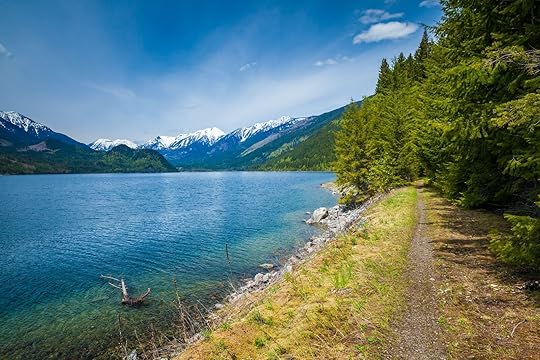
Photo: Tomas Nevesely/Shutterstock
Type of encounter: Sighting and footprintsDate: December 25, 2020Closest campground: Bannock Point Recreation AreaAt night on Christmas 2020, a driver and passengers near Silverton, British Columbia, reported an unusual encounter to the BFRO. While driving past a clearing, one passenger noticed a large, upright figure, which dropped to its hands and legs when she saw it. She said she first thought it was bear, but both passengers who saw it ruled that out after a few moments as bears hibernate during winter. They returned later that evening, where they saw extremely deep tracks in the snow that looked bipedal, sharing the photos with the BFRO and a local news outlet. They described the footprints as “really alarming,” noting that they headed into the woods in a straight line, rather than looking like they came from a meandering, four-legged animal print.
The encounter was investigated by the BFRO, which found the report to be credible. The BFRO investigator played a recording of a supposed Sasquatch howl for one of the witnesses, who said she’d heard similar calls near her remote cabin around the time of the sighting.
The BFRO shared a very specific location for the sighting: it was on the east side of Slocan Lake near Silverton, BC. The closet campground is Bannock Point Recreation Area, about 2.8 miles to the north. Sites are remote, self-sufficient, and walk-in only, so don’t expect much in the way of amenities (though you will have jaw-dropping views of Slocan Lake). If you’d prefer something slightly more developed, head to Silverton Campground, about five miles to the north. There, you can choose from lakeside or creekside sites, with amenities like bathrooms and a bocce ball court. They’re reservable online, making it easier to plan your Sasquatch-sighting trip in advance.
Cougar, Washington
Photo: jennagenio/Shutterstock
Type of encounter: Vocalizations and soundsDate: August 13, 2023Closest campground: Eagle Cliff CampgroundBigfoot reports from park rangers are few and far between, but a report on The Dyrt for Eagle Cliff Campground seems to indicate at least one more ranger out there has had a Bigfoot experience — at least according to online reviews. Cougar is the closet town to Mount St. Helens, in Gifford Pinchot National Forest. The town is popular for hiking, fishing, and exploring local caves, and the campground has plenty of amenities for recreators, such as bathrooms, showers, and a camp store. But the best thing about the site if you’re angling for a Sasquatch sighting is its proximity to so many Bigfoot encounters and reports. Drivers have claimed to see them on the roads, and backpackers have heard them yelling at night. According to one reviewer on the Dyrt, a park ranger at the Eagle Cliff Campground had seen evidence of one, noting that “the ranger was cool enough to tell us all about his Bigfoot experience in the area, complete with mobile phone picture of the footprint.” 
— Suzie Dundas, commissioning editor
More like thisWildlife10 Endangered Animals to See (and Save) Before They’re GoneThis Is the Most Dependable Tent on the Market, and You Can Grab It Right Now for Cheap

It seems like every upstart outdoors brand feels the need to attempt a re-invention of the tent. And while I concede that there are some incredible tent designs out there, sometimes simple is best, as with the REI Half Dome tents. I’ve owned two: First, a Half Dome 2, the two-person option, for myself and my partner, and now that we have a little one in tow, a Half Dome 3, the larger three-person version. If you’re looking to replace your current tent with a long-lasting option that remains as comfortable years down the line as the day you bought it, there’s no better tent on the market.
We hope you love the REI Half Dome tents! Just so you know, Matador may collect a small commission from the links on this. Listed prices are accurate as of the time of publication.
I’ve never found a more dependable tent. We bought the SL2 in 2014 and have spent more than 100 nights in it since. Truth be told, the only reason we bought the bigger option this year is that we had a baby – otherwise, we’d still be rocking the SL2. With each, I bought the tent knowing exactly what I was going to get:
a straightforward tent that’s easy to set upstorage pockets on the inside for my phone, keys, wallet, and a bookPacked weight of five pounds, five ounces and packed size of 7 x 20.5 inches for the SL2; and six pounds, six ounces and packed size of 7 x 23 inches for the SL3 – big enough to comfortably fit two or three people but small and light enough to strap to my backpacking pack and carry into the wildernessPrice: From $299 for the two-person, $399 for the three-person
 Photo: REI
Photo: REI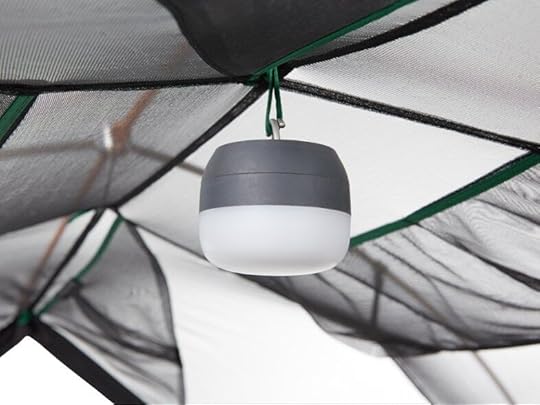 Photo: REI
Photo: REI Photo: REI
Photo: REI Photo: REIBreakdown of the REI Half Dome 2 and Half Dome 3 tents
Photo: REIBreakdown of the REI Half Dome 2 and Half Dome 3 tentsThe rainfly has four vents to help keep you cool on hot nights. As someone who prefers to sleep in slightly cooler temps than average, I love this. With the fly off, I can see the stars through the mesh windows above me. As an added bonus, the windows allow sunlight to creep in slowly in the morning, making it easier to sleep in past sunrise than with other tents I’ve owned.
The guylines (the strings that help tighten the tent to the ground properly) are effective and provide added balance for windy nights in the high country. The tent comes with eight stakes, enough to stake all four sides of the tent plus the guylines.
There are doors that mirror each other on both sides for ultimate convenience getting in and out. That means you or your camping partner won’t have to crawl over one another in the middle of the night should nature call.
For backpacking, the minimum trail weight of the SL 2 is four pounds, 14 ounces. The minimum trail weight of the SL3 is five pounds, 14 ounces.
Setting up the REI Half Dome 2 and Half Dome 3 tents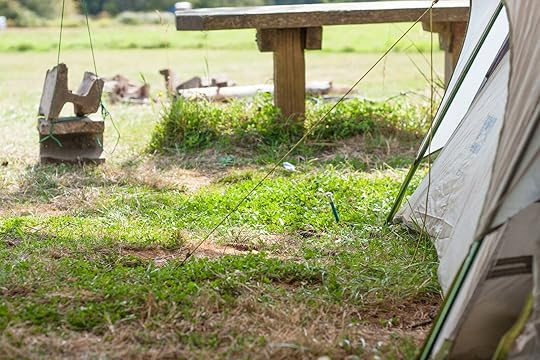
Photo: Lindsey Munguia’s Photos /Shutterstock
For the novice camper, setting up a tent can be among the most anxiety-inducing activities of the entire camping experience. How do you get those poles to bend perfectly into form, and then squeeze them through those tiny little holes on the top of the tent? And, once you’ve finally figured that part out, how on Earth do you get them to stabilize with both ends firmly secured into the dirt so that the whole thing doesn’t collapse upon you and ruin the 45 minutes of sleep you’re going get?
I’ve camped for 30 years and have never found a tent that’s easier to set up from scratch than the REI Half Dome SL series. It sets up in just a few minutes and there are only two poles. Each is made of DAC PF aluminum, and each is the same size. Both are hubbed and collapsible, meaning they come with a rope-like string on the inside of the pole that tightens and loosens to allow the pole to form into one long pole for use, and collapse into a foldable set for storage. The poles are also color-coded, so everything is super simple. The comes with specific instructions, but this is how I do it:
Choose a spot for the tent and brush away any debris that might poke my back or butt while I’m inside the tent.Remove the tent from the storage bag and lay out flat on my chosen camp spot.Remove pole pegs and stakes from small storage bag inside main storage bag, and place at the four corners of the tent.Anchor the four corners with the stakes, pulling the loop as far out as you can until the tent is taut.Remove the poles from the storage bag and tighten them into form.With the tent still lying flat, but anchored, take the first pole and slide it through the holes on the top, careful to insert it only into the right slots so that the pole is guided diagonally across the top of the tent.Be sure to insert the first pole through the larger hole on the top.Repeat with the second pole. Secure the hook over the two poles at their meeting point.This will lift the tent into form. Guiding the second pole will get tougher in the second half after you’ve crossed over the first pole – this is good. It means you’re doing it right.Anchor the second pole first with the stakes and pegs. It is possible that one or more of the stakes will have been pulled out of the ground during the process of setting the poles – that’s ok, this is the time to re-stake any loose ends.Anchor the first pole.Put your sleeping bag and other overnight camping gear into the tent (no food in the tent, unless you fantasize about waking up to a bear sniffing at the mesh door).Put the rainfly over the top of the tent, unless you’re certain you’ll be sleeping under a cloudless sky. The stars do look wonderful from inside.Crack a beer and toast to the epic night to come.To disassemble the tent, first, unstake the corners, and then slide the poles out in the reverse manner of how you set them. I prefer to roll the tent and stuff it into the sack, rather than just stuffing it, but that’s me.

Photo: Red Herring/Shutterstock
Any downsides to the REI Half Dome SL tents?We’ve established that the REI Half Dome SL tents are easy to set up and cozy. My only complaint is that the tents are slightly over the 4-pound weight limit I’d prefer to have with me on backpacking trips. I also own an REI Passage 1 tent, which is better for backpacking if I’m not going with my partner. Having a tent classified as “plus size” (as these are) is great for car camping but not ideal for backpacking. Still, a tent that’s barely over four pounds and fits two people isn’t bad.
Overall, the REI Half Dome 2 and Half Dome 3 tents are perfect for campers of all levels due to their simplicity and dependability. You’d be hard-pressed to find a tent at this price point that, with proper care and storage, will last you longer. =
More like thisBackpackingThe Ultimate Summer Backpacking Gear GuideThe 14 Dreamiest Island Airbnbs for Weekend Trips From NYC

Summer in New York City can be a lot — rooftop drinks at golden hour, yes; subway platforms that feel like kiln rooms and the smell of garbage in 90-degree heat, no thanks. By the time June rolls around, even the most committed New Yorkers start eyeing the calendar for a weekend getaway. And some of the easiest ways to escape the city are on islands just across the water.
There’s a whole lineup of beaches and islands within a few hours of the city. You’ve probably been to a few already, but this is the season to go back with a plan — not just for a beach day, but for a proper stay. A few days surrounded by water is often enough to clear your head and make the city feel a little less everything when you return.
On Block Island, you can hike through grassland trails that end in Atlantic views and spend the afternoon at peaceful beaches without cell service. Shelter Island has stretches of uncrowded shoreline and Airbnbs that feel like home by the second night. Fire Island brings energy in the summer, but step a few boardwalks away from the Pines or Cherry Grove, and you’ll find stretches of dune-backed sand where it’s surprisingly quiet. And then there’s Newport, where you can build a weekend around music festivals or birdwatching along the coast.
Once you’ve settled on an island, the place you stay can shape the entire trip. An Airbnb gives you more flexibility — space to spread out, a kitchen to cook in, and a better sense of what the place is actually like outside of the high season. I’ve rounded up Airbnbs across eight islands within an easy drive from the city, from breezy beach cottages and architectural stunners to private compounds with docks and views you can enjoy from a kayak. There are picks for groups, solo travelers, couples, families, and last-minute planners. I’ve also included seasonal events worth planning around, local spots to eat, and enough practical detail that all you really need to do is get a ferry ticket, a friend with a car, or the willingness to brave Friday traffic.
We hope you love the island Airbnbs near New York City we recommend! Just so you know, Matador may collect a small commission from the links on this page if you decide to book a stay. Listed prices are accurate as of the time of publication.
Aquidneck Island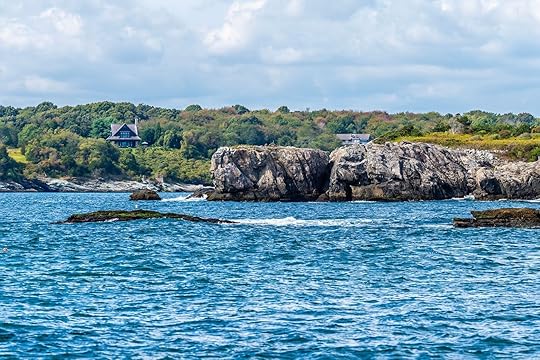
Photo: Nicola Pulham / Shutterstock
The island is officially called Aquidneck, but for most people it’s just Newport. What makes it ideal for a weekend away isn’t just its shoreline or Gilded Age mansions, but how much there is to do without needing to drive far.
This year, the Newport Folk Festival (July 25 — 27) and Newport Jazz Festival (August 1 — 3) return to Fort Adams with lineups that pull bigger and more unexpected names every year — The Roots, De La Soul, and Janelle Monáe are all set to play. There’s also the Newport Classical summer season, which pairs chamber concerts with unexpected venues like vineyards, churches, and historic estates — and in May, the Newport Food Truck & Craft Beer Festival kicks off summer with local brewers and street food favorites.
Big-name festivals aside, this is an island best enjoyed outdoors. The Norman Bird Sanctuary has seven miles of trails through coastal woods and salt marshes, and is a favorite spot for local twitchers hoping to spot ospreys, egrets, and migrating shorebirds. Over at Brenton Point, the windy overlook is a go-to for picnicking, kite-flying, and watching seabirds ride the updrafts along the cliffs.
Three-bedroom with private beach access in Portsmouth Photo: Airbnb
Photo: Airbnb Photo: Airbnb
Photo: Airbnb Photo: Airbnb
Photo: Airbnb Photo: AirbnbSee more photos
Photo: AirbnbSee more photosIf you’re staying with friends or family, this three-bedroom home in Portsmouth offers a quieter perch at the northern end of Aquidneck Island, with front-row views of the Mt. Hope Bridge and Hog Island Lighthouse. The house sits right on the island’s West Shore, and a private staircase off the back lawn leads directly to the beach — perfect for swimming, beachcombing, or watching the sunset roll in across Narragansett Bay. Floor-to-ceiling windows, vaulted ceilings, and an open-plan layout keep the interiors bright and breezy, while a wrap of couches in the living room makes the space ideal for unwinding after a day outside. You’ll be close to both Newport and Bristol, but you might find it hard to leave.
Or base yourself in a romantic Airbnb just outside downtown Newport, and you’ll be within walking distance of great restaurants like the recently opened Mediterranean eatery Flora, with breathtaking harbor views and a seasonal, seafood-forward menu inside the Gardiner House hotel and local institutions like The Black Pearl, famous for its clam chowder and dockside dining on Bannister’s Wharf.
Six guests, three bedrooms
Price: $450 per night

Photo: SEALANDSKYPHOTO / Shutterstock
Block Island sits just 13 miles off the coast of Rhode Island. It’s small — barely 10 square miles — but packed with coastal trails, swimmable beaches, and no-frills spots to eat, drink, and stay. Cars are allowed, but bikes and mopeds tend to take over in the summer. From New York, the most scenic route is to Montauk, then a ferry across.
If you haven’t been in a few years, the food scene has had a quiet glow-up. Payne’s Donuts is still essential for a paper bag of sugary crullers in the morning, and Persephone’s Kitchen does locally-sourced brunch. For lunch, The Surf is casual and chic for fish tacos with a view. At night, The National draws a steady crowd with live music, fire pits, and a menu that runs from fresh seafood to stacked burgers — a proper end-of-day spot after a day out on the island.
Once you’ve eaten your way through town, head out to the trails. Clay Head Trail (known locally as “the Maze”) winds through golden grasslands and ends at one of the best views of the Atlantic in the state. A few miles south, you’ll find Rodman’s Hollow — a 40-acre nature preserve carved by glaciers, where unmarked paths lead to spectacular views over the island’s southern coast. Crescent Beach and Mansion Beach offer swimmable stretches of sand and smaller coves and rocky outcrops reward anyone willing to veer off the main paths.
If you’re heading over in July, the island’s Fourth of July parade is worth planning around — it’s small, a little chaotic, and proudly homemade, with everything from fire trucks and decorated bikes to costumed dogs. Live music and pop-up food stands keep things going well past sunset.
Architect-designed home with sweeping views and spacious decks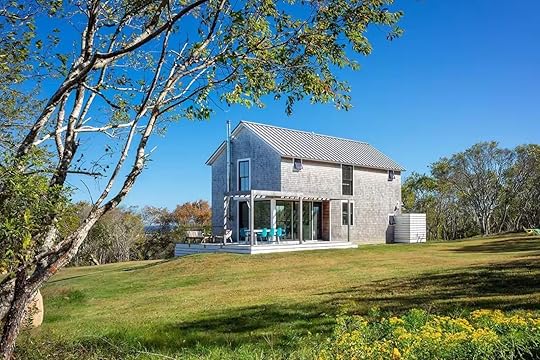 Photo: Airbnb
Photo: Airbnb Photo: Airbnb
Photo: Airbnb Photo: Airbnb
Photo: Airbnb Photo: AirbnbSee more photos
Photo: AirbnbSee more photosMany of Block Island’s Airbnbs fall into two styles: classic beach houses that haven’t changed much in decades, and contemporary builds designed to frame the landscape. This three-bedroom home leans toward the latter. The stunning property is perched on the second highest hill on the island and offers floor-to-ceiling windows and sweeping views across the Atlantic and Long Island Sound.
Designed by Rhode Island–based architect Jim Estes, the house opens onto an open-plan main floor where the kitchen, dining, and living areas all connect, with glass doors leading out to a deck and shaded pergola perfect for al fresco meals. The bedrooms are simple and spacious, with a private balcony off the primary suite and additional sleeping options downstairs for larger groups. There’s a fire pit for cooler nights, a rain shower for sandy afternoons, and plenty of open lawn for kids (or adults) to sprawl, play, or take in the views. It’s just a short bike ride or drive from the ferry, the beach, and Mohegan Bluffs.
For something closer to town, this three-bedroom stay ($439 per night) in the heart of New Harbor offers walkable access to restaurants, marinas, and the ferry. It’s the only house in the commercial district, but it’s backed by open space, so the deck still feels private, with sunset views over the water.
Eight guests, three bedrooms
Price: $700 per night
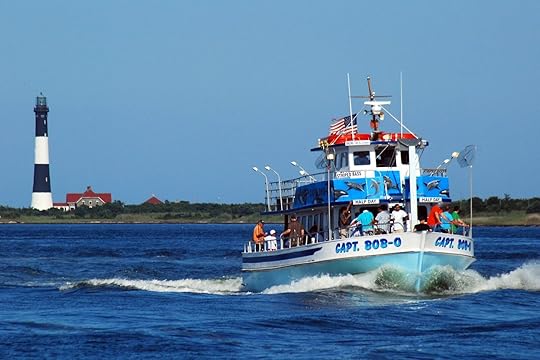
Photo: James Kirkikis / Shutterstock
Fire Island is one of those places that hardly needs an introduction — especially if you’ve lived in New York long enough to start checking the ferry timetable as soon as it hits 70 degrees. You probably already know about the no-car policy, the boardwalks that double as runways, and the Pines vs. Grove dynamic. What’s easy to forget, though, is how many ways there are to experience the island, and how much is still happening beyond the social calendar.
The island is made up of around 17 communities. Ocean Beach is the most developed, with shops, a few bars, and the closest thing to a main street. Cherry Grove has long been a cultural hub for queer nightlife and creative energy, while the Pines is more polished and home to some of the island’s most architecturally ambitious houses. Other areas like Kismet, Atlantique, and Saltaire skew more residential and family-oriented, with quieter beaches and boardwalks that feel like an extension of people’s front yards.
There are nearly 30 miles of beach to explore, plus kayaking, clamming, tidepooling, and the elevated boardwalk through the Sunken Forest — a rare coastal woodland where American holly and other hardwoods grow in a protected hollow between the dunes.
But if you are going to party, this summer’s calendar brings plenty of reasons to visit. Highlights include the Fire Island Invasion (July 4 — 6), a wild celebration that spills from Cherry Grove into the Pines; the BOFFO Performance Festival (July 12), with art and music installations across the island; and the Fire Island Dance Festival (July 18 — 20).
Secluded Fire Island retreat with panoramic dune and ocean views Photo: Airbnb
Photo: Airbnb Photo: Airbnb
Photo: Airbnb Photo: Airbnb
Photo: Airbnb Photo: AirbnbSee more photos
Photo: AirbnbSee more photosStaying on Fire Island in peak season means planning ahead. Many rentals book out months in advance, especially in the Pines and Cherry Grove.
One of the most sought-after Airbnbs on the island, this mid-century architectural standout is at the edge of the Fire Island National Seashore, with uninterrupted views of the dunes, ocean, and bay. The main house is pyramid-shaped and framed by a wall of glass that gives the open living, dining, and kitchen area the feel of a light-drenched lookout post. A double-sided fireplace anchors the space, while multiple dining areas — indoors, on the upper deck, and by the pool — make it easy to settle in for a full weekend.
The 800-square-foot master suite includes a California king, a private office, and sliding doors that open out to the pool deck. Across the way, two guest cabana rooms share a detached bathroom, offering just enough separation for groups traveling together. Outside, there’s a heated saltwater pool, a hot tub, and a full outdoor kitchen. It’s rare to find this kind of privacy with views like these — so if you’re visiting this summer (or even next), book like yesterday.
For something smaller — but no less charming — this two-bedroom cottage ($675 per night) sits a few houses from the ocean a short walk from the ferry. The multi-level wraparound deck is outfitted with comfortable outdoor furniture, perfect for pre drinks or dinners. It’s quiet, unfussy, and ideal for couples or solo travelers.
Six guests, three bedrooms
Price: $1,125 per night
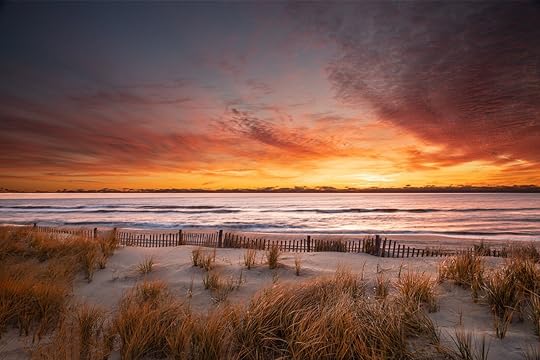
Photo: cwieders / Shutterstock
Long Beach Island (LBI) doesn’t try to compete with flashier shore towns — which is exactly why people keep going back. It’s flat and easygoing, with miles of bikeable streets, low-rise beach houses, and boardwalks that lead straight into the sand. There’s no central scene — just a stretch of towns that each do their own thing, from the historic fishing docks of Barnegat Light to the arcades and oyster bars of Beach Haven.
Most New Yorkers drive the two hours (give or take, depending on how generous the Belt Parkway is feeling) to LBI. There’s a bus from Port Authority to Toms River, but you’ll still need a cab or ride-share for the last stretch. Either way, once you cross the bridge at Route 72, you’re in beach mode.
Beach Haven gets the most attention, and not just for its beaches — there’s a vintage amusement park, an old-school arcade, a local brewery, and a few decent spots for oysters and cocktails within walking distance of each other. Barnegat Light, at the opposite end, feels more residential, with commercial fishing boats docked just off the main drag and the lighthouse that gives the town its name open for climbs on clear days. In between are neighborhoods like Surf City and Loveladies — more spread out, quieter, and mostly residential, though you’ll still find a few charming coffee shops, general stores, and clam shacks along the way.
If you’re not on a towel or a surf board, there’s still plenty to do. Rent a bike and cruise the back roads, go crabbing in the bay, or walk the maritime forest trail at the Edwin B. Forsythe National Wildlife Refuge. Some come just for the birding, as the refuge is one of the best places in the state to spot herons and osprey in the wild.
Dining is low-key but improving. Delaware Ave. Oyster House in Beach Haven does local seafood right without trying too hard, while Raimondo’s in Ship Bottom leans more traditional Italian — white tablecloths and all. The Arlington is a good call for beer and burgers, and Blue Water Café does reliable brunch. Just know that in high season, most places fill up by early evening, so if you’re not on a patio with a drink by then, you’re probably waiting for one.
Waterfront four-bedroom in Ship Bottom with private dock and rooftop deck Photo: Airbnb
Photo: Airbnb Photo: Airbnb
Photo: Airbnb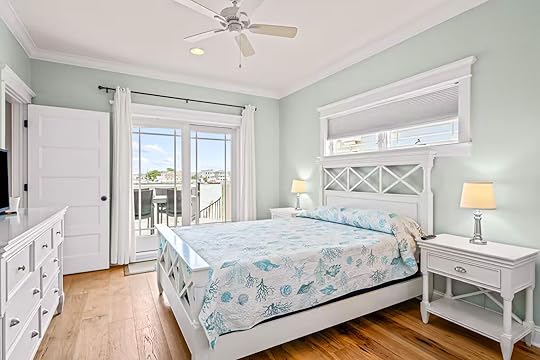 Photo: Airbnb
Photo: Airbnb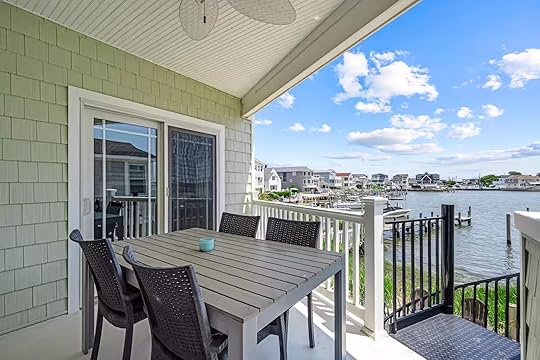 Photo: AirbnbSee more photos
Photo: AirbnbSee more photosAfter dinner, you could technically drive back, but it makes a lot more sense to stay the night. There’s no shortage of vacation rentals, but in high season, the good ones book fast. Airbnbs here range from classic shingled cottages to newer builds with outdoor showers and rooftop decks. Most are walkable to the beach, and a lot of them come with bikes, beach chairs, and a handwritten list of where to get the best crumb cake.
One standout is this four-bedroom waterfront home in Ship Bottom. Each bedroom has its own bathroom and a view of the water. A rooftop deck, private dock, and direct beach access make it easy to spend the day outside, whether you’re bringing paddleboards or just a book and a beach blanket.
Another option for groups is this newly built four-bedroom house ($1,500 per night) in Surf City, just two blocks from the beach. It sleeps up to 12, with multiple living spaces, a rooftop deck, and a private pool out back. There’s an elevator for easy access across floors, plus extras like bikes, beach gear, and even an ice maker in the garage for cooler refills before you hit the sand.
12 guests, four bedrooms
Price: $478 per night
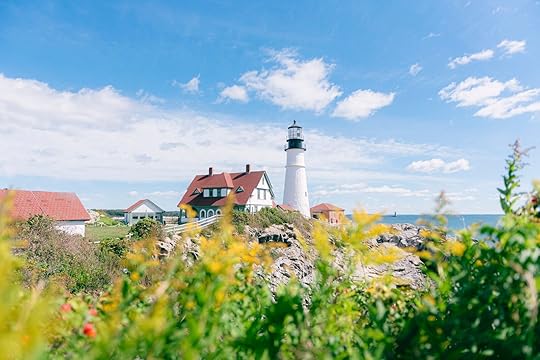
Photo: Cavan-Images/ Shutterstock
You won’t hear anyone say Martha’s Vineyard is a cheap getaway — but for all its reputation, the island still feels grounded. Beyond the well-heeled visitors and historic homes, there are dusty bookstores in West Tisbury, old fishing boats out of Menemsha, and fried clams served on paper trays at roadside takeout windows. Nearly forty percent of Martha’s Vineyard remains in its natural state, making it the perfect getaway for nature lovers.
From New York, most people drive up to Woods Hole and catch the ferry to Vineyard Haven or Oak Bluffs. If you want to skip the traffic altogether, Seastreak runs a seasonal ferry from Manhattan that gets you there in just over five hours — slower than flying, but arguably more enjoyable.
This summer, Martha’s Vineyard is marking the 50th anniversary of Jaws with walking tours of filming locations, outdoor screenings, and talks with members of the original crew. On August 15, the annual Oak Bluffs fireworks return to Ocean Park, preceded by a concert from the Vineyard Haven Band.
Food-wise, in Vineyard Haven, The Maker Pasta Shop Café is opening in May and will likely become a neighborhood staple for a bowl of ragù and a glass of wine. For drinks, Bad Martha’s Brewery in Edgartown is still a reliable stop, and if you’re after something a little more dressed up, The Attic in Vineyard Haven has a well-curated wine list — mostly bottles, with a lovely by-the-glass selection and small plates.
Luxury five-bedroom retreat with water views and private pool in West Tisbury Photo: Airbnb
Photo: Airbnb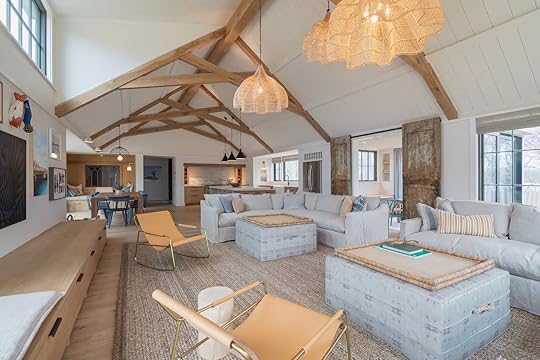 Photo: Airbnb
Photo: Airbnb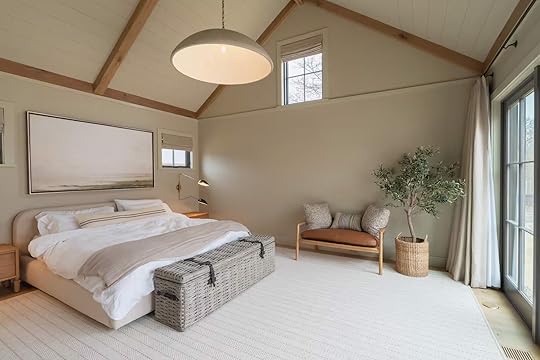 Photo: Airbnb
Photo: Airbnb Photo: AirbnbSee more photos
Photo: AirbnbSee more photosAirbnbs here are on the higher side, especially in summer, but grab some friends, split the cost, and Martha’s becomes more than just a playground for the East Coast elite.
If you’re looking to stay somewhere that feels like its own little corner of the island, this five-bedroom home in West Tisbury fits. Set on over five acres along Watcha Pond, the property includes direct water access and a barrier beach just a paddle away. The main house was completed in 2024, with nearly every room facing the pond or the Atlantic. Outside, there’s a heated pool and hot tub tucked into native gardens, and kayaks and paddleboards ready to go.
For something smaller, this three-bedroom Cape-style home ($599 per night) is just outside Oak Bluffs. It offers gorgeous pond views, a deck for outdoor meals, a private patio off the primary suite, and a loft sleeping space.
10 guests, five bedrooms
Price: $1,350 per night

Photo: Bokic Bojan/ Shutterstock
Much like Martha’s Vineyard’s, Nantucket’s reputation tends to precede it: expensive, exclusive, and deeply seasonal. And while there’s truth to that, it doesn’t mean the whole island runs on rosé and white jeans. You’ll spot the designer sandals and champagne coolers, but you’ll also see fishermen unloading gear on the docks, fifth-generation locals running breakfast spots, and there’s a long list of things to do that won’t cost more than a bike rental.
For New Yorkers, getting there is straightforward. You can fly directly into Nantucket Memorial Airport or take Seastreak’s seasonal ferry from Manhattan, with a brief stop in Oak Bluffs. The more common option is to drive to Hyannis and catch the ferry from there — especially if you’re bringing bikes or beach gear for the weekend.
Some of the best things to do on Nantucket don’t cost anything. Dionis and Steps are quieter — ideal if you simply want to sit, read, or swim without the scene. Surfside and Cisco tend to draw bigger crowds, with surfers in the lineup, volleyball nets in the sand, and coolers packed for the day. The Sconset Bluff Walk winds along the eastern edge of the island past sea cliffs and weathered summer houses, with open views of the Atlantic. You can walk it out and back in under an hour, stop for photos near Sankaty Head Lighthouse, or detour into Sconset for coffee or a sandwich before looping back.
If you’d like to time your visit around an event, this summer’s calendar kicks off early: the Nantucket Wine & Food Festival runs May 14 — 18, followed by the Book Festival (June 12 — 15) and the Film Festival (June 25 — 30). July brings the Comedy Festival (July 10 — 12), and on August 9, the Boston Pops concert returns to Jetties Beach with fireworks and a stage set against the Atlantic.
Elegant six-bedroom home near Nantucket’s Historic District with room for the whole group Photo: Airbnb
Photo: Airbnb Photo: Airbnb
Photo: Airbnb Photo: Airbnb
Photo: Airbnb Photo: AirbnbSee more photos
Photo: AirbnbSee more photosLike Martha’s Airbnbs on Nantucket aren’t cheap, but they are gorgeous. If you’re browsing, it’s worth checking Airbnb’s Design Category — the rates are usually higher, but the properties tend to be more thoughtfully styled and comfortable for groups.
This six-bedroom home sits just outside Nantucket’s Historic District and works well for groups who want easy access to town. The layout spans three floors, with bedrooms on each level, including three on the ground floor. There’s a chef’s kitchen, a bluestone patio with a grill and dining setup, and off-street parking for multiple cars, which is rare for this part of the island. Town is about a 10-minute walk, and there are bikes if you’d rather ride.
For solo travelers or couples, a two-bedroom cottage ($680 per night) offers a quieter stay in a residential neighborhood near Surfside. You can walk to grocery stores, restaurants, and the local bus stop, and the beach is a five-minute drive. Inside, there’s a king bed in the primary bedroom, a rain shower and soaking tub in the main bath, and a washer and dryer for longer stays. The patio includes a grill and fire pit, with enough room to unwind outside without leaving the house.
13 guests, six bedrooms
Price: $700 per night

Photo: Joao Paulo V Tinoco/ Shutterstock
Getting to Shelter Island isn’t difficult — unless you try to leave Manhattan on a Friday after 3 PM. Most people drive, then take one of the two short car ferries: from Greenport on the North Fork or from North Haven near Sag Harbor. You don’t need a reservation, just line up and roll on. If you time it right, the whole trip takes about three and a half hours. If you don’t, you’ll be sitting in Hamptons traffic with everyone else who had the same idea.
Once you’re across, Shelter Island feels like a real island escape. It’s not as sleepy as the North Fork, nor as snooty as the Hamptons. It’s small enough to bike across (if you don’t mind the hills), and the close-knit community means that if you show up twice in one summer, the person pouring your coffee will probably remember your order.
There are four main beaches, and which one you choose mostly depends on what kind of day you’d like to have. Wades Beach is the most family-friendly, with lifeguards, bathrooms, and calm water. Crescent Beach (aka Louis’ Beach) is livelier, especially late in the day when the Sunset Beach crowd filters down the shoreline with drinks in hand. Shell Beach is a narrow stretch better suited to birdwatching and quiet walks. And Menhaden Lane, on the east side of the island, is where you go if you would like to get through a few uninterrupted chapters.
If you’re planning to park at any beach between May 15 and September 15, you’ll need a permit — either online through ParkMobile or in person at the Town Clerk’s office. Daily passes are $25, weekly is $100, and yes, they do check.
After a day at the beach, there are a handful of places worth planning your night around. This summer, Sunset Beach Hotel’s mezzanine is expected to fill up fast on weekends — especially Sundays — with DJs, drinks, and a crowd that leans more Sag Harbor than sleepy beach town, though weekday lunch remains an easy walk-in. Over at The Pridwin, the Terrace remains one of the best places on the island for a proper cocktail and sunset view, whether or not you’re staying there. Flora, inside the Gardiner House, continues to draw a steady crowd for Mediterranean plates and harbor views, but the bar at The Chequit tends to be easier to land a table at. Léon 1909 is still the spot for standout French-Italian, cooked over an open fire. But keep in mind it’s normally packed by 6 PM on weekends.
Waterfront estate with private beach, dock, and panoramic bay views Photo: Airbnb
Photo: Airbnb Photo: Airbnb
Photo: Airbnb Photo: Airbnb
Photo: Airbnb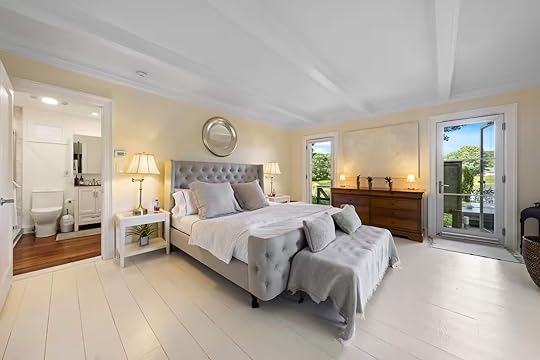 Photo: AirbnbSee more photos
Photo: AirbnbSee more photosShelter Island isn’t huge, but where you stay makes a difference. Some people want to be near Sunset Beach for the social scene, others might prefer something with water access and a bit more privacy.
Set on seven acres at the end of a long drive on the Menantic Peninsula, this four-bedroom estate feels more like a private compound than a vacation rental. Every room looks out over the water, and the open-plan layout — cathedral ceilings, skylights, and oak floors — gives the interior an airy, all-day-bright feel. There are two balconies, a large gas fireplace, and a full chef’s kitchen with marble counters and high-end appliances. Outside, you’ve got direct beach access, a long dock for boating or fishing, and a sunset-facing hot tub that overlooks the bay. It’s quiet, private, and just a five-minute drive to town.
Or there’s this three-bedroom home near Hay Beach has garden-facing picture windows, a home office and gym, and a newly added barrel sauna off the lawn. It’s an easy pick for smaller groups looking for something relaxed and design-forward, just a short walk from quiet shoreline. 
Eight guests, four bedrooms
Price: $959 per night
April 25, 2025
The Most Breathtaking Airbnbs in Northern Norway Near Fjords and Mountains
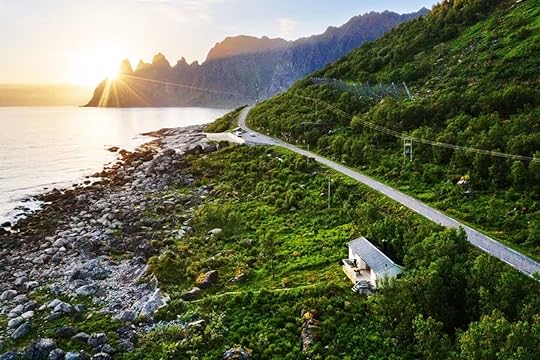
Northern Norway is one of the most otherworldly places on earth. Sitting above the Arctic Circle, its topography is defined by its coastline of little inlets, lined with dramatic, craggy mountains and breathtaking fjords. The region is ideal for anyone who appreciates spotting rare wildlife, bagging peaks and world-class fishing. Life in this under-populated landscape is peaceful yet a stay here can be quite diverse. Accommodation options range from rural cottages in fishing villages to modern chic apartments in cities such as Tromsø. With these Norway Airbnbs, you’ll not only experience the local culture but have a pretty unique setting to do so.
Traveling to Europe? Check out Matador’s Europe accommodations guides: These Greek Villas Make for a Unique and Cozy Stay in Athens 9 dreamy Airbnbs in the Greek islands 9 dreamiest Airbnbs in the South of France These Airbnbs Near the Eiffel Tower Offer Incredible Views of the Entire City 14 of the best Airbnbs in Barcelona 11 Best Airbnbs in Madrid, From a Luxury Penthouse To Artsy Apartments These Airbnbs in Ireland Showcase the Best of the Emerald Isle Stay like royalty at these Airbnb Ireland castle rentals These Vienna Airbnbs Showcase the Best of the Historic City Center
We hope you love the spaces and stays we recommend! Just so you know, Matador may collect a small commission from the links on this page if you decide to book a stay. Listed prices are accurate as of the time of publication.
Traditional red wooden lodge in Vengsøy Photo: Airbnb
Photo: Airbnb Photo: Airbnb
Photo: Airbnb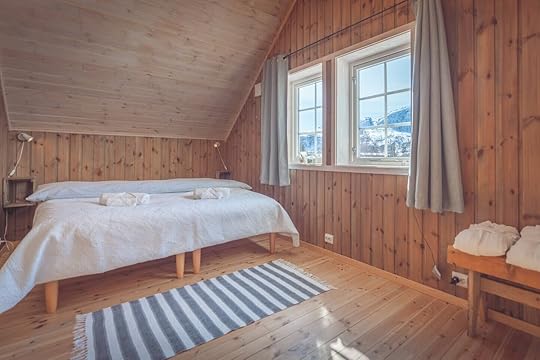 Photo: Airbnb
Photo: Airbnb Photo: Airbnb
Photo: AirbnbSee more photos
Located on the island of Vengsøy, a one-and-a-half-hour drive and ferry ride from Tromsø, this charming lodge is part of three rentals perched on a little bay. From the cabin, you can sit back and enjoy the northern lights, or take a short walk up the mountain behind to get an optimal viewing experience. During the day, Vengsøy has lots of great hiking routes and is a lovely little island to enjoy other outdoor sports Northern Norway is so famous for.
Six guests, three bedrooms
Price: $187 per night
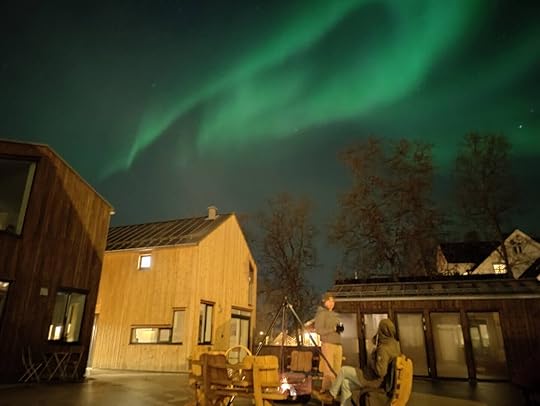 Photo: Airbnb
Photo: Airbnb Photo: Airbnb
Photo: Airbnb Photo: Airbnb
Photo: Airbnb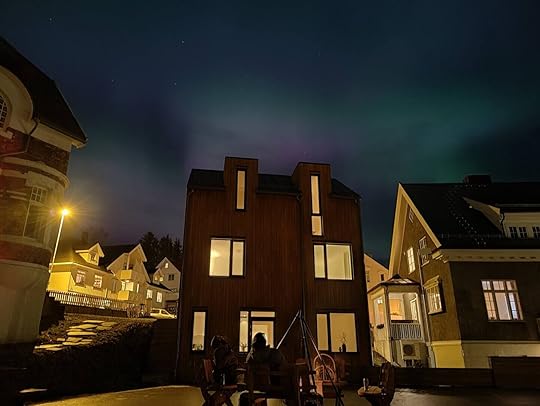 Photo: Airbnb
Photo: AirbnbSee more photos
There is quite a range of accommodation options in Tromsø from plush modern hotels to small boutique options, but staying in an Airbnb apartment will immerse you into the city’s culture. Tromsø is a great launching point for exploring the region and doing day trips to nearby islands. This three-floor apartment is an ideal base, with three modern and comfortable bedrooms, a kitchen, dining room and sitting room with large windows offering a view out over the mountains and sea. The neighborhood is quiet and peaceful but it’s a short stroll from the city center.
Five guests, three bedrooms
Price: $338 per night
 Photo: Airbnb
Photo: Airbnb Photo: Airbnb
Photo: Airbnb Photo: Airbnb
Photo: Airbnb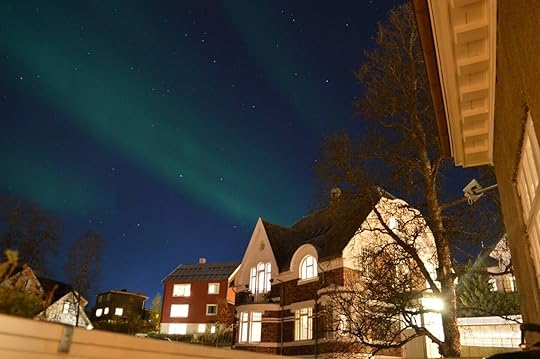 Photo: Airbnb
Photo: AirbnbSee more photos
It is no secret that Norway can be an expensive place to visit, but I’ve found the level of hospitality and comfort makes the price point seem fair. This is one of Northern Norway Airbnb’s that is a little more luxurious making it suitable for two couples or a group of friends who want a well-equipt, modern and chic stay in Tromsø. The two-bedroom villa was built in 1921 by one of the cities most famed architects. You’ll want for nothing during a stay here, the lounge comes with a grand piano and the master bedroom’s ensuite has a hot tub and a sauna. There’s even outdoor space on the ground floor where you can sit and enjoy the midnight sun during winter.
Four guests, two bedrooms
Price: $1,115 per night
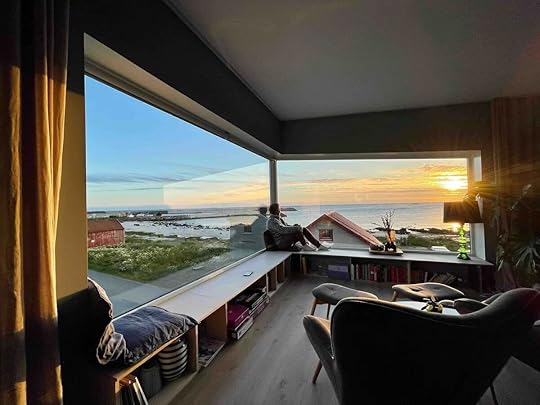 Photo: Airbnb
Photo: Airbnb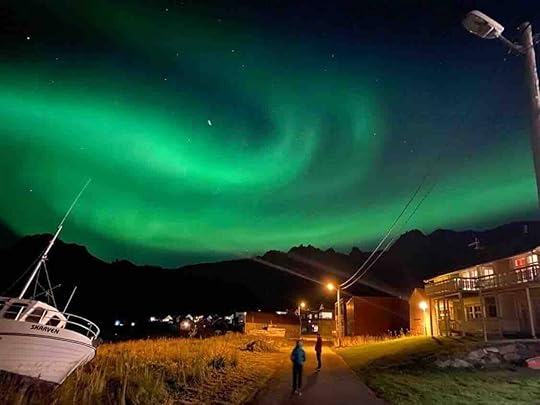 Photo: Airbnb
Photo: Airbnb Photo: Airbnb
Photo: AirbnbSee more photos
Your experience in Norway will be defined by its scenery. The country’s architects and Airbnb hosts grasp this. Case in point — the Fabrikken guest suite, a posh new apartment on the Nordland coast. Here you’ll experience Norway’s best sunsets, watching the water ripple onto the sand as the sun settles behind it. With a stocked library and plenty of space for games, this unit is perfect for families. It also gives adventurous parties easy access to the water and the mountains.
Six guests, three bedrooms
Price: $480 per night
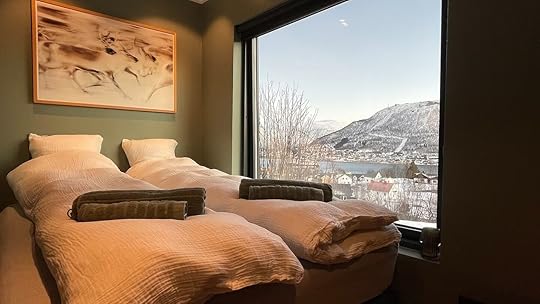 Photo: Airbnb
Photo: Airbnb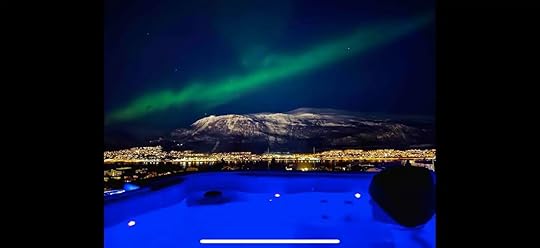 Photo: Airbnb
Photo: Airbnb Photo: Airbnb
Photo: AirbnbSee more photos
You don’t get more remote and off-the-grid than this studio cabin located above Tromsø. This would be a great option for anyone who wanted to disconnect for a few days and experience rural Northern Norway. The hopme itself is snug and compact with a epic views and a functional kitchen. The outdoor jacuzzi is the perfect place to watch the Northern Lights while remaining warm enough to actually enjoy that drink in your hands.
Two guests, one bedrooms
Price: $719 per night
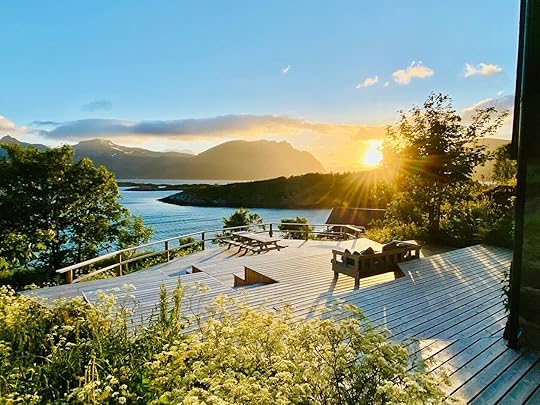 Photo: Airbnb
Photo: Airbnb Photo: Airbnb
Photo: Airbnb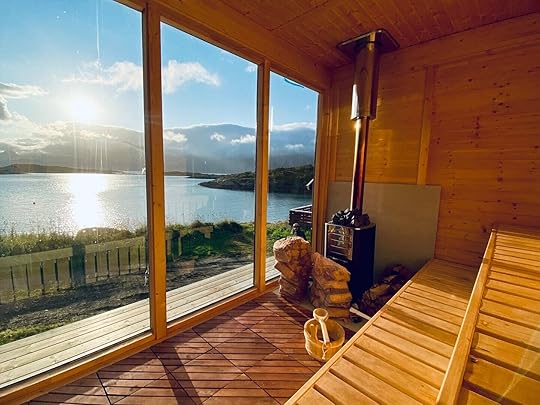 Photo: Airbnb
Photo: Airbnb Photo: Airbnb
Photo: AirbnbSee more photos
If you plan to kayak in Norway, there’s no better place to base yourself than this house by the sea in Vågan, in the heart of Nordland country. Lofoten is prime-time for kayakers and on-water adventurers. But with views like you’ll enjoy from the pad, you may not even want to leave the house. The home is tripped out with high-end living and dining spaces. It’s nearby to the harbor and town center yet sits perfectly in its own solitude, in a tiny hamlet of homes away from the bustle so you can relax on the deck and take it all in.
Twelve guests, five bedrooms
Price: $534 per night
 Photo: Airbnb
Photo: Airbnb Photo: Airbnb
Photo: Airbnb Photo: Airbnb
Photo: Airbnb Photo: Airbnb
Photo: AirbnbSee more photosBuilt along the serene coastline of Hamarøy in Nordland, Norway, Cabin Varnstua offers a tranquil retreat for travelers seeking a blend of rustic charm and natural beauty. This traditional Norwegian cabin features cozy interiors, a well-equipped kitchen, and panoramic views of the surrounding fjords and mountains — and all of this without sacrificing the remoteness you seek in the far north of the country.
The cabin’s design harmoniously integrates with the landscape, providing guests with an authentic experience of Norway’s rugged north. There is a plethora of nearby hiking trails, fishing, and general rambling about — and a post-adventure beer on the cabin’s terrace over the breathtaking scenery is a perfect end to the day.
Six guests, three bedrooms
Price: $110 per night
 Photo: Airbnb
Photo: Airbnb Photo: Airbnb
Photo: Airbnb Photo: Airbnb
Photo: Airbnb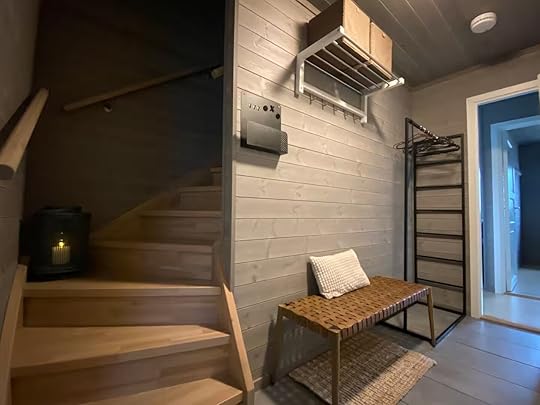 Photo: Airbnb
Photo: AirbnbSee more photos
Set along the tranquil shores of the Lofoten Islands in Norway, this newly-built waterfront cabin offers a serene escape amidst breathtaking natural beauty. The cabin’s modern design harmonizes with its surroundings, featuring expansive windows that frame panoramic views of the sea and rugged mountains. Inside, guests will find a cozy living space equipped with contemporary amenities, ensuring a comfortable stay while immersing themselves in the Arctic landscape.
Located in the heart of the Lofoten archipelago, the cabin provides easy access to a variety of outdoor activities, including hiking, fishing, and kayaking. After a day of exploration, guests can relax on the private terrace, taking in the serene vistas and, if visiting during the winter months, the Northern Lights are frequently visible.
Six guests, two bedrooms
Price: $250 per night
 Photo: Airbnb
Photo: Airbnb Photo: Airbnb
Photo: Airbnb Photo: Airbnb
Photo: Airbnb Photo: Airbnb
Photo: AirbnbSee more photos
If you’re into ski touring or splitboarding, this is the Northern Norway Airbnb for you. This cabin offers a front-row seat to some of Scandinavia’s most awe-inspiring scenery. The cabin’s minimalist design and large windows allow guests to fully immerse themselves in the surrounding natural beauty, from the jagged mountain ridges to the expansive skies that often dance with the Northern Lights. Inside, the space is thoughtfully appointed with cozy furnishings and modern amenities, providing a comfortable retreat after a day of exploration. Senja is renowned for its rugged landscapes, with outdoor activities such as hiking, fishing, and wildlife spotting aplenty in the area around this northern Nortway Airbnb.
Four guests, one bedroom
Price: $225 per night
 Photo: Airbnb
Photo: Airbnb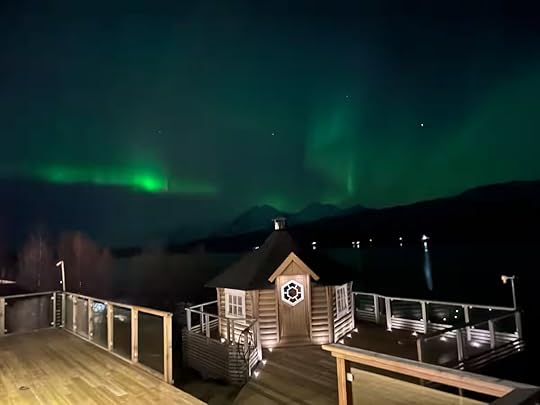 Photo: Airbnb
Photo: Airbnb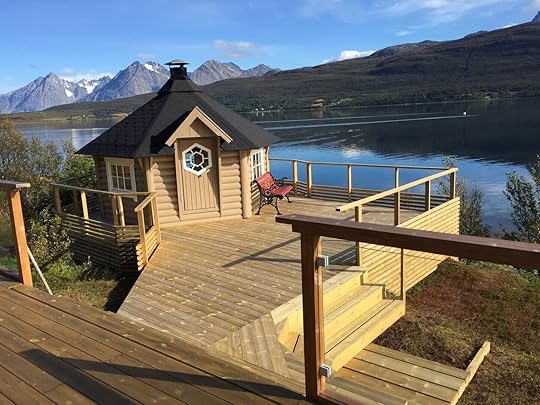 Photo: Airbnb
Photo: Airbnb Photo: Airbnb
Photo: AirbnbSee more photos
The cabin’s minimalist design emphasizes comfort and functionality, but doesn’t exclude stuff like a cozy living area, a well-equipped kitchen, and large windows that frame the stunning natural scenery outside the Airbnb. A private sauna is the perfect way to unwind after exploring the area. The surrounding region offers hiking, fishing, and, during the winter months, skiing and Northern Lights viewing. Despite its secluded location, the cottage is accessible and serves as an excellent base for exploring the diverse landscapes of Northern Norway.
 More like thisGalleries13 Gorgeous Images of Norway’s Fjord Region in Winter
More like thisGalleries13 Gorgeous Images of Norway’s Fjord Region in Winter
April 24, 2025
Hate Camping? This Game-Changing Gear Might Convert You
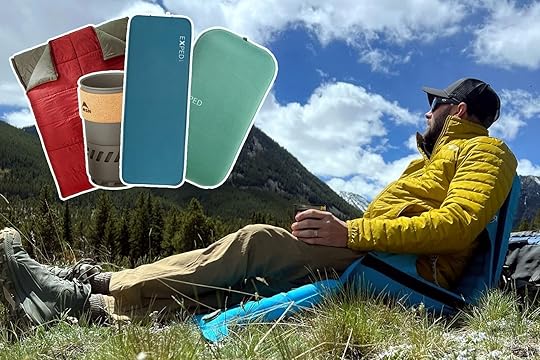
I’m going to hit you with the truth: You would camp more frequently, and get better sleep while doing so, if you had better gear. It’s tough to stoke yourself on the idea of spending a night in the woods if you know you’ll wake up with a crick in the neck and a sore back. Still, camping remains as popular as ever – in 2023, over 87.99 million North Americans camped, according to data published by Camper Champ.
There’s something to the notion that it’s not camping itself that’s preventing you from getting sleep, it’s your crappy gear. In fact, multiple scientific studies indicate that camping, can help reset the circadian rhythm and promote earlier bedtimes – suggesting that camping actually can help sleep rather than prevent it. That’s due to a lack of artificial light and the soothing sounds of nature, among other things – stuff that can’t be replicated even by the most high-tech of Hatch Sleep gadgets.
To enjoy camping, you don’t need to suffer, nor do you need to bail. This is the year to finally invest in your camp setup with this luxury camping gear for a good evening’s relaxation followed by a good night’s sleep. Here’s what to get.
We hope you love the camping gear we recommend! Just so you know, Matador may collect a small commission from the links on this page if you decide to make a purchase. Listed prices are accurate as of the time of publication.
Luxury camping gear to help you sleep betterThe most common thing that goes wrong on a camping trip is a good night’s sleep gone bad. This can happen for a number of reasons, but the one that’s truly under your control is having a comfortable sleep setup. The best way to ensure yours is optimized for you is to build it as close to your home experience as possible. A firmer ground pad for those who prefer a firmer mattress, or a cooling sleeping bag for those who like a chilly bedroom, as a couple examples. Here we break down our editors’ current setups with comparisons to “at home” options.
Swiss company Exped has spent years researching how to make sleeping in nature more comfortable. I’ve come to trust the company’s sleep gear over the past five years or so because of its excellent insulation and plush comfort. New this year, the equipment recommended here is made from recycled fabric.
Exped DeepSleep mat – for those who prefer a firmer mattress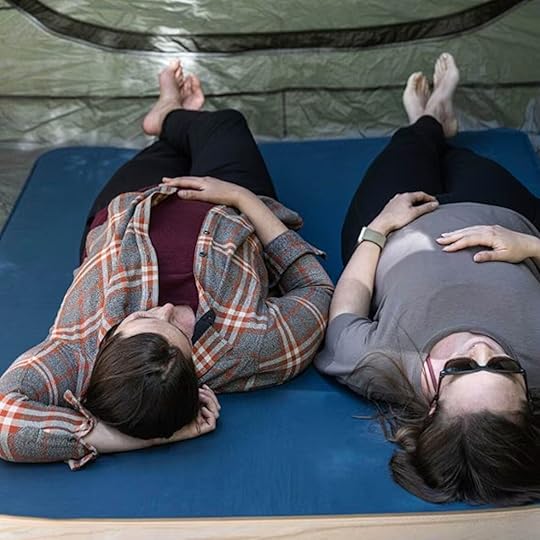
The DeepSleep is perfect for two. Photo: Exped
Home mattress equivalent: WinkBed firm version, Tempur-pedic TEMPER-Adapt Firm
The Sleep Better series exemplifies Exped’s R&D – multiple firmness and comfort options are available for different types of sleepers. Prefer a firm mattress? Opt for the DeepSleep pad, which inflates into a firmer, more resistance-bearing ground pad that fits inside a single-person tent or vehicle with ease. I brought mine to Moab a few weeks ago and appreciated its smooth surface – no ripples, no bumps, none of that weird contoured design that so many ground pads use. For more firmness, fill it up with more air, and for reduced firmness, let some air out – you can even adjust it on the fly. – Tim Wenger, Transactional Content Editor
Price: $169.95-$189.95
Exped MegaMat – for those who prefer a softer mattress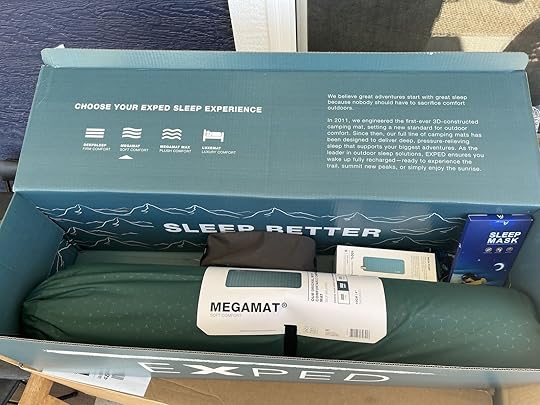 Here's how the Exped MegaMat arrived. Scroll to next photo to see it in use. Photo: Tim Wenger
Here's how the Exped MegaMat arrived. Scroll to next photo to see it in use. Photo: Tim Wenger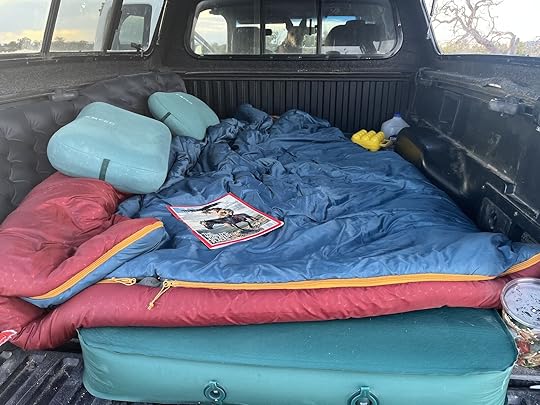 The Exped MegaMat underneath the Exped MegaSleep. Photo: Tim Wenger
The Exped MegaMat underneath the Exped MegaSleep. Photo: Tim WengerHome mattress equivalent: Helix Sunset / Helix MIdnight Luxe soft options, Tempur-Pedic TEMPER-Cloud soft
If softer is the name of the game for you, opt for the Exped MegaMat. The mat, with four inches of foam, is a single- or double-sleeper and molds to the imprint of your body more so than firmer mats do. The brand claims it’s built for both back and side sleepers, including couples, like myself and my wife, who have different sleep styles (I’m all over the place, she remains on her side most of the night). The mattress provides four inches of padding between you and the ground. It has a handle for easy carrying, easily adjustable firmness settings based on air intake, and two deflate valves. If you frequently camp with your partner, this is the pad for you. Options for singles are available, as well as a truck bed option that wraps behind the wheel wells.
The mat fills up in about a minute with the included automatic pump, which charges on a mini-USB outlet. Note that charging the pump can take a couple of hours, which I forgot to do – so I charged it for about 10 minutes in my truck at the campsite and it worked long enough to pump up multiple pieces of Exped gear for the crew. The mat deflates in under a minute and stores in its own rucksack case. -Tim Wenger, transactional content editor
Price: $239.95-$519.95
Exped MegaMat Max and LuxeMat – for frequent vagabonds
Exped Luxemat in action. Photo courtesy Exped
Home mattress equivalent: Stearns & Foster Reserve Hepburn Plush Pillow Top
Combining the versatility of the above pads and adding extra plush comfort, Exped’s MegaMat Max (also available as a single-person version) and LuxeMat with added comfort points designed to support the body and relieve pressure points. You’ll sleep on six inches of foam. The LuxeMat (also available in a single-person version) even adds an organic-cotton-and-wool-insulated cover. There are two primary use cases for these mattresses. The first is for campers who spend dozens of nights per year camping either in a tent or in their vehicle, and who need to have dependable sleep gear that can withstand heavy use. The second is for the tepid or resistant camper – if you have a friend/partner/kiddo who “just doesn’t get camping,” or who is otherwise resistant to sleeping outside the comforts of four walls, one of these mattresses is a good bait and hook.
Price: $369.95-$519.95 – MegaMat Max, $319.95 – $549.95 – LuxeMat
MegaSleep Duo – the duvet of sleeping bags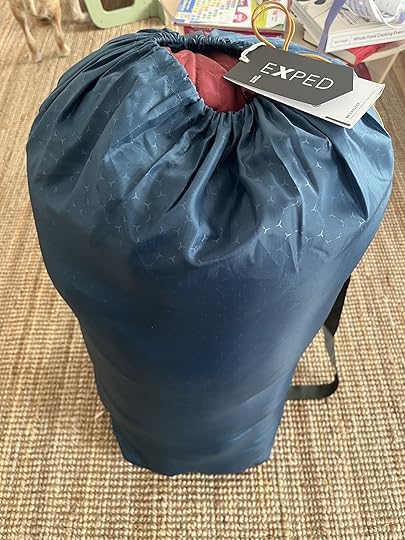 This is how the Exped MegaSleep arrived -- and it gets back to this state with a quick stuff into the rucksack. Scroll to the next photo to see it in use. Photo: Tim Wenger
This is how the Exped MegaSleep arrived -- and it gets back to this state with a quick stuff into the rucksack. Scroll to the next photo to see it in use. Photo: Tim Wenger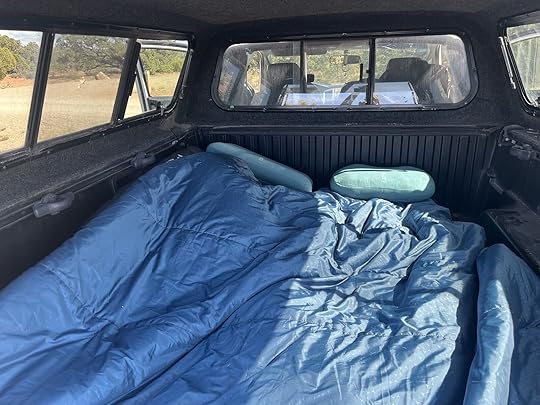 We slept like babies, with the Exped MegaMat underneath. Photo: Tim Wenger
We slept like babies, with the Exped MegaMat underneath. Photo: Tim WengerAdmittedly, I didn’t know what a duvet was until I met my now-wife at age 29. Until then, I’d slept using a ragged old comforter my mom gave me when I moved away to college at 18. The difference between what I had and what I gained was so profound that it has since served as the bracket by which I judge all things sleep – when looking at new gear for home or camping, I ask myself, “Is this the old me, or is this the new, classier me?” My wife gets all the credit for any semblance of class that I now exude, and I’m proud to report that she was as stoked as I was when I brought home the Exped MegaSleep Duo.
It’s much more than a fart sack. It sleeps our family of three (we now have a little girl) comfortably and warmly down to 25 degrees. When it’s cold, we sleep with the red side up, when it’s warmer, we sleep with the blue side up (which is comfortable down to 40 degrees). It unzips on the sides so we can vent overnight, and even comes apart into camp blankets that can move from the tent over to the campfire and back again. Aside from the pillows noted below, the MegaSleep Duo is the single most impactful piece of camp equipment we’ve added to our setup in recent years – no more bringing three sleeping bags on every camping trip. One rucksack will do. – Tim Wenger, transactional content editor
Price: $249.95
Exped Mega Pillow and/or Exped Down Pillow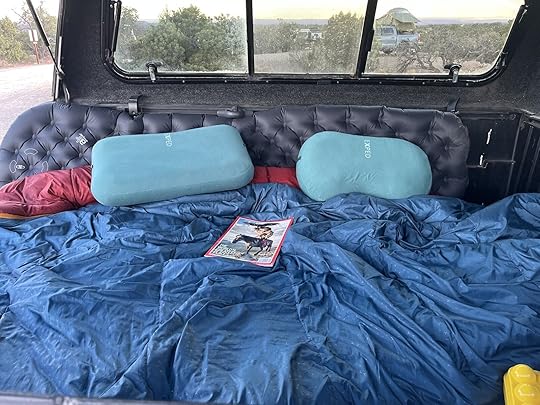
Exped Mega Pillow (left) and Exped Down Pillow (right). Photo: Tim Wenger
Made with Responsible Down Standard down and carbon offset through MyClimate, the Exped Down Pillow is like having both your home pillow and a puffy jacket under your head. The pillow is available in two sizes, the Medium being 15 inches wide and the Large being 19 inches wide. Both inflate quickly via Exped’s pump and deflate just as fast to store in the included carrying bag. Like the mats discussed above, this pillow can be adjusted for firmness on the fly by adding or relieving air. I sleep so comfortably with this pillow and have relived myself of the neck pains that used to plague my post-camping days.
My wife isn’t much for down pillows so I got her the Exped Mega Pillow. She’s found it equally comfortable and at long last ditched the raggedy old (normal bed) pillow she’s kept in our camp setup for years. According to her experience, she appreciated the extra headroom in a pillow that, unlike most camp pillows, isn’t too firm and conforms to her head.
– Tim Wenger, transactional content editor
Price: $64.95
Luxury camping gear for cooking and loungingMSR Switch Stove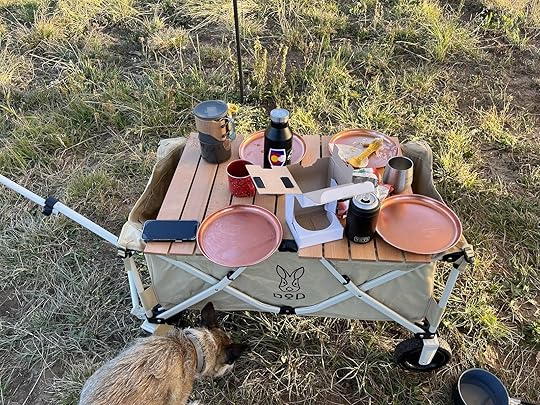 Photo: Tim Wenger
Photo: Tim Wenger Photo: MSR
Photo: MSRMaybe it’s the chilly temperatures, or the sounds of nature beckoning you to a relaxing session in the camp chair. Whatever the reason, waiting for that first cup of coffee at the campsite seems to take forever. MSR cuts that back significantly with the release of its Switch Stove, which boils 14 liters of water in under two minutes. That means you can be enjoying a pour-over in about three. Its boil canister is rounded on the bottom, which more evenly distributes the heat across the pot, allowing the water to boil faster than flat-bottomed canisters.
In addition to its rapid boiling, the Switch Stove’s signature innovation is that it allows you to sauté, simmer, or cook with your own cookware, rather than a specific piece designed only for this stove. The stove, stand, and canister pack up nice and tight into the lid and base, so it won’t take up much room in your pack. I’ve never found a camp stove that is more efficient or easier to bring along on camping and easier backpacking trips. – Tim Wenger, transactional content editor
Price: $139.95
Crazy Creek AirLounger
Photo: Crazy Creek
Thinking back on all the backpacking trips I’ve taken where I ended up sitting on a fallen tree or a rock while eating and lounging makes me surprised it took me so long to get a backpacking chair. Though, since I waited, I went all in and got a Crazy Creek AirLounger and it’s been a game changer.
The chair arrived at my house rolled up in a four-inch diameter, I actually mistook it for a mat and thought the brand had shipped me the wrong product — it packs up much more compact than I’d thought. After unrolling it (and realizing that it was me that was mistaken), it took me about 20 seconds to set the chair up. It’s super comfy and easy to set anywhere. It inflates promptly, the straps on the sides fasten in place and can be tightened or loosened depending on whether you want a reclined or upright sit.
The chair is made of 8mm high-density cored closed-cell foam and covered with 210D C-Zero DWR coated ripstop nylon to keep it dry on damp ground. The Hex 2.0 chair is also great for outdoor events like live music or picnicking by a river. I’m not much of an angler, but can envision it being great for fishing as well. Here’s a handy hack — store it in an unused cup holder on the site of your pack and hook it to the pack by attaching a carabiner to the pack and the chair’s straps. That way, you can carry it without putting it in your pack while not having to worry about it falling from its perch. – Tim Wenger, Transactional Content Editor
Price: $124.95
Satechi Qi2 Wireless Car Charger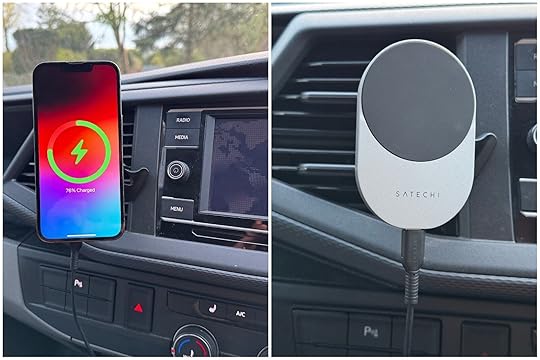
Photo: Katie Gavin
When you live out of a camper van for weeks at a time, small tech upgrades can completely change your experience. I’ve gone through a couple of cheap wireless chargers over the years, but they either lost grip over time or only charged if you angled the phone just right.
I picked up the Satechi Qi2 after testing the brand’s passport cover with Find My integration (read my full review here). Installing it in the van was straightforward—just clipped it into the dash vent, plugged it in, and that was it. It instantly delivered MagSafe charging that held firm, even on bumpy forest roads. It charges faster than anything else I’ve tried, and it actually looks good while doing it.
If you’ve cycled through a couple of underperforming chargers, like I have, this one’s worth the upgrade. Especially if you’re not traveling with a backup power bank (or have multiple devices to charge), having something that works reliably while you’re driving means you’ll actually arrive with a full battery. It’s one less thing to think about when you’re setting up camp or packing out. And it stays put—even when you’re crawling down uneven terrain—so you’re not constantly fishing your phone off the floor when you go off road. Katie Gavin – Editor
Price: $59.99
Xgimi MoGo 3 Pro Portable Outdoor Movie Projector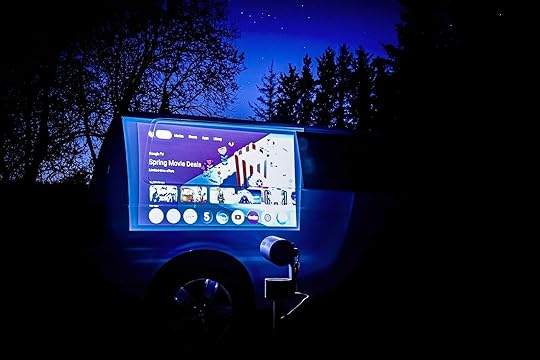
Photo: James Gavin
I’ll be honest—when my husband and I first started looking into portable projectors, it felt a little indulgent. Like, do we really need a big-screen setup when we’re camping in the van? Turns out, this projector is now our favorite bit of kit.
We used to balance a laptop on a duffel bag or squint at a shared phone screen from across the van, which worked okay, but it wasn’t exactly relaxing. Projecting onto the inside of the van with the Xgimi MoGo 3 Pro changed everything. It’s like watching a 65-inch TV at home. It connects to Wi-Fi or your phone’s hotspot which worked fine even with weak signal.
The best thing about it is that you don’t need a screen—just a blank surface like the side of your tent or van. The auto-focus and screen alignment features mean you don’t have to mess around trying to get a level image, even when projecting onto a textured backdrop. It’s also weather resistant, with a design that protects the lens and internal components from light drizzel and dust. It’s true luxury camping gear that can go anywhere.
The built-in Google TV interface makes it easy to stream from Netflix, Prime Video, YouTube, and pretty much any other app you’d want on the road. We watched the new season of The Last of Us last weekend in the woods, which—note to self—maybe wasn’t the best choice given the setting. But dang, it looked good. Crisp HD and surprisingly bright even when the ambient light wasn’t totally gone yet.
The audio is exceptional for something this compact. We didn’t need an external speaker and felt totally immersed just using the built-in sound. It also doubles as a Bluetooth speaker and has ambient lighting, which adds a nice vibe when you’re winding down for the night. You can also pair it with wireless headphones, which is great if, like us, one goes to sleep early and the other stays up late watching anime.
If you’re thinking about it and will use it camping, definitely go for the projector and power base combo ($479.75). If you can shell out $450, it’s not that much more expensive. With the base, we got just over two hours of battery life —enough for a full-length movie without needing to plug in. If you want to charge, you’ll need a bank capable of at least 65W, such as the Bluetti AC180, which would power the projector through a serious binge session (as well as charging your other devices).
I wouldn’t have guessed that a projector would end up on our essentials list, but here we are. If you’ve got kids, it’s a guaranteed hit. If you are the kid, it makes even a modest camp setup feel like an outdoor theater. Just don’t forget to pack the popcorn. Katie Gavin – Editor 
Price: $449.99-$499.99
Buy Now – Projector and Power Base Combo
More like thisTechnology + GearThis Generic, 'Normcore' Brand Makes the Best Travel ClothingNew Zealand’s Hawke’s Bay Is a ‘Great Wine Capital.’ These Wineries Prove It.

From the airplane window, I can see where the vast blue of the Pacific Ocean meets New Zealand’s east coast, and a gentle lip of white surf kisses dark sand. Just inland are brine-anointed vines, and farther back, the land grows craggy. There in the distance is Te Mata Peak, the “sleeping giant” standing sentinel over the Hawke’s Bay region of New Zealand’s North Island.
Soon, Napier comes into view. Docked cruise ships are full of tourists eager to explore the city at the heart of Hawke’s Bay’s wine country and the “Art Deco Capital of the World.” In 1931, Napier was devastated by an earthquake. When the architects rebuilding the city looked to the outside world for inspiration, they saw Art Deco, and everything was rebuilt in that style.

Photo: Hawke’s Bay Tourism
Beyond its architecture, Napier lies on a plain whose five shifting rivers have deposited rich alluvial silt, which merges with volcanic rock from ancient eruptions to create the abundantly productive soil that makes Hawke’s Bay New Zealand’s “fruit bowl,” as it’s often called. Pit fruit dominates, but this region is best known for another crop: grapes. The signature grapes here are used for chardonnay and syrah, but 38 varietals are grown in the compact region.
Hawke’s Bay’s unique geography creates a variety of diverse microclimates, and with 25 different soil types present throughout the growing areas, winemakers have room to experiment. Although Hawke’s Bay is New Zealand’s second largest winegrowing region, its focus is on vineyards of exceptional quality — surely part of the reason that it became one of only 12 Great Wine Capitals of the World in 2023 and why four of its wineries were named regional (and one global) winners for their wines, culinary programs, landscapes, restaurants, sustainability practices, or cultural experiences in this year’s Best of Wine Tourism (BOWT) awards.
Where to experience Hawke’s Bay’s award-winning wine tourismFor immersive innovation: Smith & Sheth
Photo: Hawke’s Bay Tourism
After a quick tour of Napier, my host Rachel from Hawke’s Bay Tourism takes me to the Smith & Sheth Oenothèque (a French word referring to a wine cellar and lounge in this instance) — Regional Winner of this year’s Wine Tourism Services award. Throughout my stay in Hawke’s Bay, I hear Steve Smith spoken of as a visionary, and I soon understand why. Aside from his own projects, Smith played an essential role in establishing the illustrious Craggy Range winery (more on this later), making him a founding father for this region’s wine scene as it exists today.
Smith’s partnership with Brian Sheth quickly earned their venture respect, yet the co-merchants call themselves “first-generation wine drinkers.” Perhaps this explains the casual, welcoming environment they’ve cultivated for tastings.
Tastings start with a chat in the wine bar, which is designed to be a meeting place for friends and family or a casual space for functions. Down to earth is the description that comes to mind — not only for the relaxed atmosphere but also for the obvious emphasis on preservation of the region’s precious and fragile terroir.

Photo: Hawke’s Bay Tourism
After a tasting paired with local nibbles from the neighboring, seasonally focused restaurant Malo, I visited Smith & Sheth’s Heretaunga Wine Studio, a Regional Winner in its own right for Innovative Wine Tourism Experiences. The goal here is to bring consumers into the vineyard, despite the urban environment.
All five senses are instantly engaged upon entry — soft light and muted colours, the smell of wood and wine, the sound of a Māori welcome, the feeling of cool leather as we settle in — and then the main attraction: a huge digital monitor that’s seamlessly integrated into the wall. Its impressive dimensions force the eye to scan constantly as scenes from wine production in the region flow across the screen, accompanied by goosebump-inducing music and text. Every detail is carefully considered to create an incredibly immersive experience.
Smith & Sheth: 4 Te Aute Road, 2 the Courtyard Village, Exchange, Havelock North 4130, New Zealand
For superior sustainability: Church Road
Photo: Hawke’s Bay Tourism
At 10:30 AM on the second day of my trip to Hawke’s Bay, I’m about to enjoy the earliest wine-tasting of my life. My hosts are unfazed — apparently, this is just another day in the tourism business here in Hawke’s Bay.
Our first stop today is Church Road. With 125 years of history at the site, this respected winery has a well-established reputation, and it was bound to appear on any BOWT list. When we arrive, the sun is shining, and my hosts are preparing for Jazz in the Park, one of the frequent events the winery holds in addition to tastings and tours.
I’m treated to the Icons Tasting Tour, which takes customers through the Tom collection. These wines pay homage to the founder, Tom McDonald, and allow the winemaker’s creativity to come to the forefront. Our guide, Mitch, talks me through how geography and geology combine to create different flavors. Church Road has a highly selective process that yields innovative wine, but it’s something else that was recognized during this year’s BOWT awards: sustainability.

Photo: Sinean Callery
Sustainability is mandated for winegrowers in New Zealand — meaning all the wineries in the region meet high standards for sustainable production — but Church Road has stepped things up a notch to become this year’s Regional Winner for Sustainable Wine Tourism. Its innovations are simple but effective. For example, the information material is presented on an iPad instead of paper.
The presentation includes a Tiaki Promise — a “commitment to care for New Zealand” from a Māori word loosely meaning “conserve and protect” — and a section on responsible hosting, helping guests be aware of their alcohol consumption. The winery’s approach proves that you don’t have to reinvent the wheel to make a real and valuable move towards more sustainable tourism practices.
Church Road: 150 Church Road, Taradale, Napier 4112, New Zealand
For entertaining overnights: Black Barn
Photo: Hawke’s Bay Tourism
Lunch is at Black Barn Vineyards, whose rustic board and batten style is both striking and perfectly suited to this region. By this time, I’ve already come to associate Black Barn with beautiful architecture and a high standard of hospitality.
I’m staying at Euchre Stables, one of the winery’s 17 retreats that secured it the Regional Winner award for Accommodation. These beautiful retreats are scattered throughout Black Barn’s growing areas and beyond. They vary in size from one to eight bedrooms, making them perfect for everything from a romantic getaway to a corporate team-building retreat.
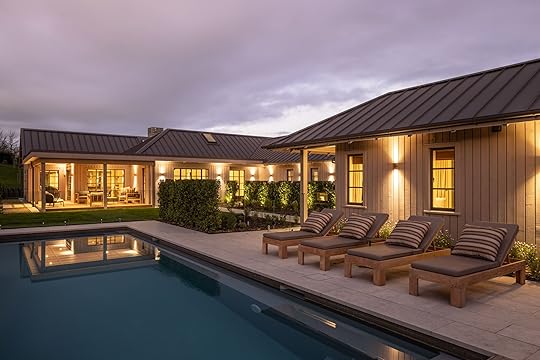
Photo: Hawke’s Bay Tourism
The two-bedroom house where I’m staying sits beside the Tukituki River, set among vines as many of the retreats are. It features both wide-open spaces to host and cosy nooks to relax. My hosts have thought of everything to make me feel comfortable — local and organic produce for breakfast, luxurious toiletries scented with lavender sourced from the locality. A clear map shows me a hidden walking trail right by the river where I go to watch the mist rise from the river in the morning sunlight.
The folks at Black Barn have a refreshingly casual approach to wine tourism, which makes wine feel accessible to a wide range of consumers. As an example, tastings here can be done in flights: a sampling tray is provided with notes, allowing the customer to decide how independent or interactive they’d like their experience to be.
At Black Barn’s Bistro, Rachel and I order sweet seared carrots, an umami explosion of mushroom and roasted aubergine, and garlicky scampi with spaghetti. Everything is delicious, and I’m not surprised to hear that the restaurant only narrowly missed out on the BOWT award for Culinary Experiences.

Photo: Hawke’s Bay Tourism
The focus at Black Barn is on providing a full cultural experience, which is part of the reason that it was also named Regional Winner for Art and Culture. Aside from excellent wine and food, functions take center stage. After lunch, we stroll to the amphitheater-shaped venue site just up the road, and Rachel reminisces about the concerts she’s enjoyed here. With space for 2,000 people and wide-ranging views over the surrounding vineyards, the space has hosted both local talent and international names such as The Proclaimers and Bryan Adams.
Black Barn Vineyards: 34 Black Barn Road, Havelock Hills, Havelock North 4294, New Zealand
For perfect pairings: Craggy Range
Photo: Hawke’s Bay Tourism
It’s immediately obvious why Craggy Range chosen as the Regional Winner in Architecture and Landscape at this year’s BOWT awards. The building is best described as a modern chateau, with a barrel-shaped fermentation room highlighting its main focus. The building is nestled among vines, looking out to the peaks from which it takes its name. Being so beautifully situated may seem like a stroke of luck, but local lore says that Steve Smith stood at the peak of Te Mata and picked this exact spot back in the founding days of Craggy Range.
The light is fading fast and painting the clouds pinkish as we walk around the compact but abundantly productive gardens that Jennifer Lyons, a protegee of Master Chef winner Nadia Lim, tends. Lyons prefaces the menu, detailing the current harvest and gardening tasks being done. Here again, the dedication to the local environment is clear: “Our gardens work in harmony with the land — enhancing crop yields, preserving soil fertility, and maintaining balanced rotations.”

Photo: Sinean Callery
We don’t have time to enjoy the ultimate food and wine tour, which lasts four hours, but I’m excited for dinner. Craggy Range was also named this year’s Global Winner for Culinary Experiences. The menu is creative, seasonal, and as local as can be. What it can’t or doesn’t produce itself, it carefully sources from locals.
We hear that Johnny’s figs, which feature heavily on the menu on the evening we visit, are the best in the world. After tasting them, I’m inclined to agree. Casey, the head chef, spoils us with a few surprises in addition to the slow-cooked pāua (the Māori name for a few species of sea snails), roasted quail’s breast, and local snapper, naturally served with a salad fresh from the gardens we’d just visited.
Craggy Range: 253 Waimarama Road, Havelock North 4230, New Zealand
Getting to and around Hawke’s Bay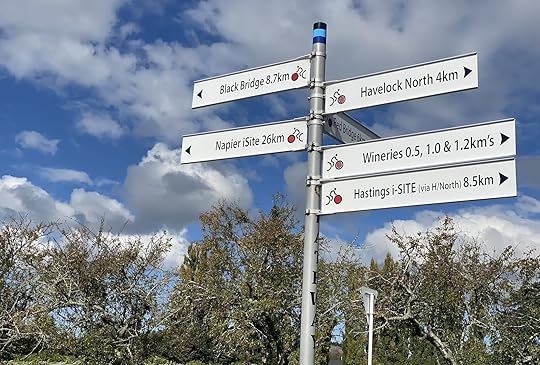
Photo: Sinean Callery
The best way to explore this region is by bike. Hawke’s Bay is criss-crossed with cycling paths, making it easy to visit the various growing areas and cycle from cellar door to cellar door. Hawke’s Bay is also part of the Classic New Zealand Wine Trail, a 236-mile trail that takes you through 80 percent of New Zealand’s wine production in five days of cycling. With a bike from the award-winning tour operator Tākaro Trails, I got to whizz along between vines and fiery-leaved trees, experiencing the abundance of the harvest season in Hawke’s Bay. 
Autonomous Uber Rides Are Coming to LA, and They’re in VW’s Iconic All-Electric ID. Buzz

Your Uber rides could soon be in the modern, electric version of one of the world’s most iconic vans — sans driver. Uber partnered with Volkswagen Group of America’s autonomous mobility arm, Volkswagen ADMT, to launch a commercial robotaxi service in the United States. Starting in Los Angeles in 2026, you can hail a ride from Volkswagen’s all-electric, autonomous ID. Buzz on Uber, with plans for nationwide expansion over the next decade.
The collaboration reflects a shared ambition: to make autonomous ride-hailing a scalable, commercial reality.
“Volkswagen is not just a car manufacturer—we are shaping the future of mobility,” Christian Senger, CEO of Volkswagen Autonomous Mobility, said in a press release. Uber’s CEO Dara Khosrowshahi called the deal a “significant milestone” in advancing autonomous transport solutions.
At the center of the project is the ID. Buzz AD, a long-wheelbase, fully electric reimagining of the iconic Microbus. Outfitted with Volkswagen’s autonomous driving technology, the vehicle seats at least seven passengers, making it purpose-built for ride-hailing.
Testing of the ID. Buzz AD is expected to begin in late 2025. Initially, human safety operators will be present in all vehicles. A transition to fully driverless service is anticipated by 2027, contingent on approvals from California’s Department of Motor Vehicles and Public Utilities Commission.
Volkswagen and Uber intend to expand the fleet to “thousands” of vehicles across multiple US markets by 2035.
Uber’s partnership with Volkswagen is the latest in a series of strategic AV collaborations. The company is actively working with over 14 autonomous mobility providers and has already launched robotaxi pilots with Waymo in Phoenix and other cities, including LA. Self-driving cars are already proving their value in making it easier for tourists to explore cities. 
The Cheapest, and Most Expensive, Airline in Every State

Finding the most affordable domestic flight in the United States can be hard. There are a seemingly endless number of constantly changing variables, from timing, to airline, to where you’re departing and arriving. Tips about the best time to buy domestic flights are easy to find, as is information about the cheapest airports (on average) to fly out of. A new data analysis from CashNetUSA took things a step further by comparing each major airline’s price per mile by state.
According to the study, average domestic flight prices dropped 8 percent in the year leading up to September 2024, signaling the end of the so-called “revenge travel effect.” Staffing shortages, adjusted flight schedules, and more worked alongside high travel demand to raise the average prices of domestic flights. That seems to be leveling out.
The most expensive airlines for domestic flights in every state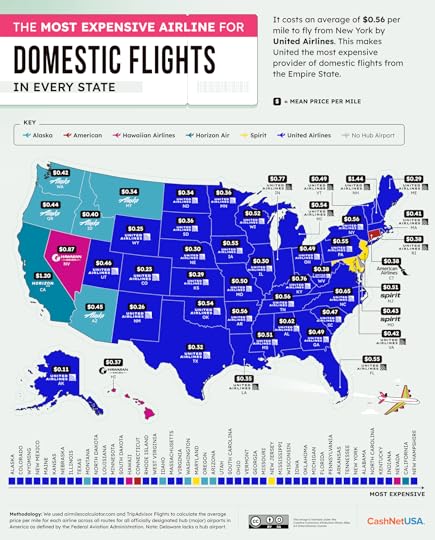
Infographic: CashNetUSA
The cheapest airlines for domestic flights in every state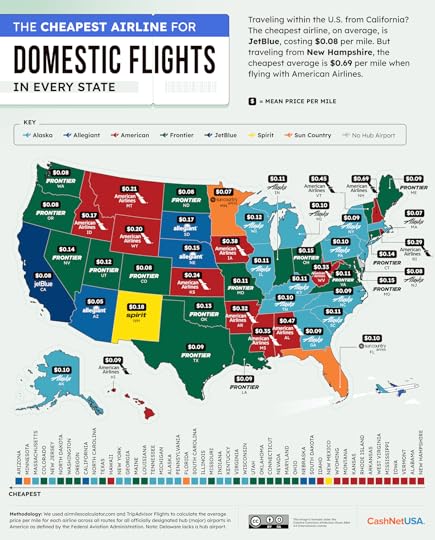
Infographic: CashNetUSA
Unsurprisingly, budget airlines fill the list of the most affordable airlines across the country — assuming you avoid the add-on fees, of course. The amount that an airline services a region and where airline hubs are located are also important factors.
CashNetUSA came to its conclusions using a list of the officially designated hub airports in America according to the Federal Aviation Administration. (Delaware is left off as it doesn’t have a hub airport.) Flight route combinations from each airport to all other airports was used to calculate the distance for the per-mile cost. Then, they went to Tripadvisor for a sample of one-way flights for one adult in economy up to November 2024. Along with the listing, the company also created an interactive tool for travelers to search the data themselves.
It’s not perfect, of course. Some airports have a longer list of longer-haul or more expensive flights by nature, while others have a large number of short connecting flights. Add to that the pricing volatility and pull-back that airlines have put in place since the start of the Trump Administration. Still, this analysis is one more tool to help you find the best deal on your next trip. 
April 23, 2025
The 10 Most Affordable Beach Towns in the US, According to Big Data

Travelers looking for an affordable beach town to visit this year should head to Texas, according to a new extensive analysis from Beach.com, a global database for beach vacation planning and inspiration.
The “Cheap Beach Vacations in the US for 2025” report analyzed millions of pieces of data, from flight records to vacation rental costs to walkability scores, to find the most affordable beach towns in the US. And travelers can use the numbers to plan a cheap-ish beach weekend no matter where they live, as the analysis accounts for differences in factors like seasonality and where visitors are flying from.
The top spot for the most affordable beach town getaway for two went to Pasadena, Texas, sitting southeast of Houston near Galveston Bay. The city “doesn’t score high for walkability or everyday expenses,” writes the report, but makes up for it by having the most affordable flights, hotel, and vacation rental costs of the 100 cities analyzed in the report.
Here are the other beaches that took the top spots, based on the total costs of a weekend for two people, including round-trip flights, lodging, dining, and activities, accounting for seasonality. Also taken into consideration is the walkability score of a destination, because what good is being near the beach if you can’t go for a walk in the sand?
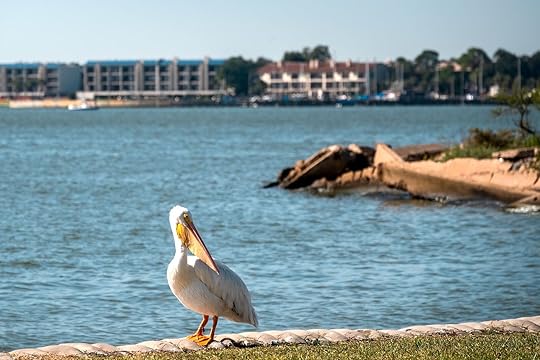
Photo: Mark Taylor Cunningham/Shutterstock
For a classic beach weekend, you’ll probably want to head to a small town where you can stroll along a boardwalk, grab ice cream from a decades-old ice cream shop, and rent vacation rentals stocked with beach chairs and pickleball sets. If that’s your vibe, these are the most affordable beach towns to visit this year, according to data.
5. Elizabeth, New JerseyAffordability score: 87 of 100Total weekend cost (hotel): $2,057Total weekend cost (vacation rental): $2,159Elizabeth is close to the Jersey Shore, and visitors can take advantage of Elizabeth’s lively downtown area while still being close to boardwalks, beach towns, and Atlantic surf, all just a short drive away.
4. Providence, Rhode IslandAffordability score: 88 of 100Total weekend cost (hotel): $1,784Total weekend cost (vacation rental): $1,977Barrington Beach is a popular place to spend a day just 20 minutes or so from Providence, but you’ll have access to lots of beaches on Narragansett Beach. Just note that the beach season is shorter than it is in, say, Florida, so you’ll want to plan your trip between June and September, but ideally in July or August.
3. Berkeley, CaliforniaAffordability score: 89 of 100Total weekend cost (hotel): $1,895Total weekend cost (vacation rental): $1,800Berkeley, California, may not be known for traditional beach lounging, but waterfront parks along the bay, like the Berkeley Marina and César Chávez Park, are a perfect place for scenic walks and breezy picnics — plus views of the Golden Gate Bridge.
2. Hialeah, FloridaAffordability score: 92 of 100Total weekend cost (hotel): $1,905Total weekend cost (vacation rental): $1,883While Hialeah itself isn’t on the water, sitting just inland from Miami, it’s offers a quick drive to world-class beaches like Miami Beach and Haulover Park at a fraction of the cost of staying in Miami.
1. Pasadena, TexasAffordability score: 95 of 100Total weekend cost (hotel): $1,549Total weekend cost (vacation rental): $1,680Pasedena isn’t on the Gulf of Mexico, but it’s just a short drive from coastal spots like Sylvan Beach Park in La Porte and Galveston Island. Plus, the proximity to Houston — a major hub for United Airlines — helps keep airfare prices low year-round. Just check the weather forecast if you visit during hurricane season.

Photo: Sean Pavone/Shutterstock
Want a mix of easy beach access without sacrificing culture, restaurants, and chic hotels? A bigger city beach getaway may be a better pick, especially if you’re visiting outside of the traditional beach season.
5. Newark, New JerseyAffordability score: 78 of 100Total weekend cost (hotel): $2,141Total weekend cost (vacation rental): $1,839Newark is usually thought of as a slightly more affordable place to stay near New York City, but like Elizabeth, it’s fairly close to the Jersey Shore. The closet beach is about 45 minutes away, and you can spend the day at the beach, then have dinner at one of the best restaurants in all of New York City.
4. Long Beach, CaliforniaAffordability score: 78 of 100Total weekend cost (hotel): $1,920Total weekend cost (vacation rental): $1,839If you’re looking to soak up LA vibes but don’t want to pay LA prices, Long Beach could be the place to go. You’ll have access to sand and sun at Alamitos Beach, plus walkable bike paths leading to the area’s laid-back, surf-inspired downtown.
3. Oakland, CaliforniaAffordability score: 79 of 100Total weekend cost (hotel): $1,863Total weekend cost (vacation rental): $1,894If you love the idea of spending a beach weekend near San Francisco but don’t want to be in the artsy enclave of Berkeley, you can stay in Oakland without breaking the bank.
2. Houston, TexasAffordability score: 83 of 100Total weekend cost (hotel): $1,749Total weekend cost (vacation rental): $1,734For convenience to the Gulf of Mexico’s beaches but a little more in terms of nightlife and culture, Houston may be the best beach destination for you. The closest beach is Sylvan Beach, known for more than 30 acres and regularly small waves ideal for swimming.
1. Baltimore, MarylandAffordability score: 86 of 100Total weekend cost (hotel): $1,817Total weekend cost (vacation rental): $1,890Baltimore is on the Chesapeake Bay, so expect waterfront parks and harbor views. That said, sandy shores like Sandy Point State Park and Ocean City are within day-trip distance. Baltimore is a great choice for beachgoers who want to combine a day in the city with a day at the beach, especially as Washington, DC, is just a quick drive away, too. Note that swimming in the Inner Harbor isn’t recommended.
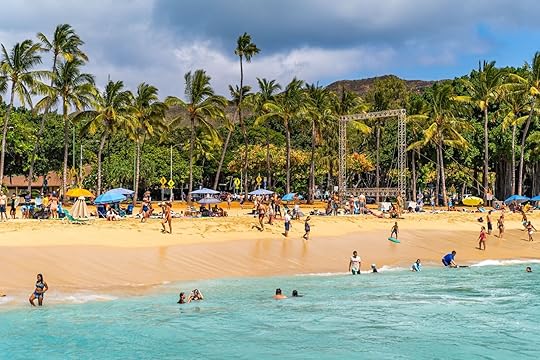
Spoiler: Honolulu, Hawaii, was one of the most expensive beach towns analyzed in the report. Photo: Iv-olga/Shutterstock
Often, websites will hired third-party companies to run “surveys.” But they’re often not very scientifically accurate, and done just to drive website clicks, not to actually provide useful information. But the recent Beach.com analysis of affordable beach towns is different, as it shared extensive information about its methodology and data collection.
It was more thorough than most, analyzing various factors for the 100 largest US cities within 25 miles of a coastal or lakeside beach. It then adjusted for factors like size and availability of hotels to create an “affordability index,” taking into account peak seasonal pricing. It looked at factors like dining costs, everyday expenses (like groceries, car rentals, and public transit), average round-trip airfare for two, hotel rates for a weekend, vacation rental rates for a weekend, and how easy it is to walk to the beach. Factors were assigned a weight out of 100, with airfare — the most expensive category — counting for a quarter of the final affordability index score.
Dining and the cost of everyday expenses were pulled from fact-checked sources at the US Bureau of Transportation Statistics, the US Bureau of Economic Analysis, and the US Travel Association. Flight costs were pulled from the Bureau of Transportation Statistics’ Airline Origin and Destination Survey for the last three quarters of 2024, then aggregated from all connecting cities to account for wherever someone might be flying from.
For hotels, the Beach.com team gathered average price estimates for two-, three-, and four-star hotels from every city using Google, checking rates from different seasons. They then took the “midpoint of the cheapest and most expensive nightly rate across all hotel star ratings for each city per quarter” to use in the analysis. Data was analyzed similarly for vacation rentals, with 900 rentals per city surveyed and averaged to find a weekend rate. Only complete rentals (a.k.a. private homes, not room shares) were analyzed. 
Matador Network's Blog
- Matador Network's profile
- 6 followers



